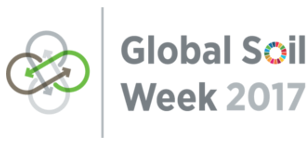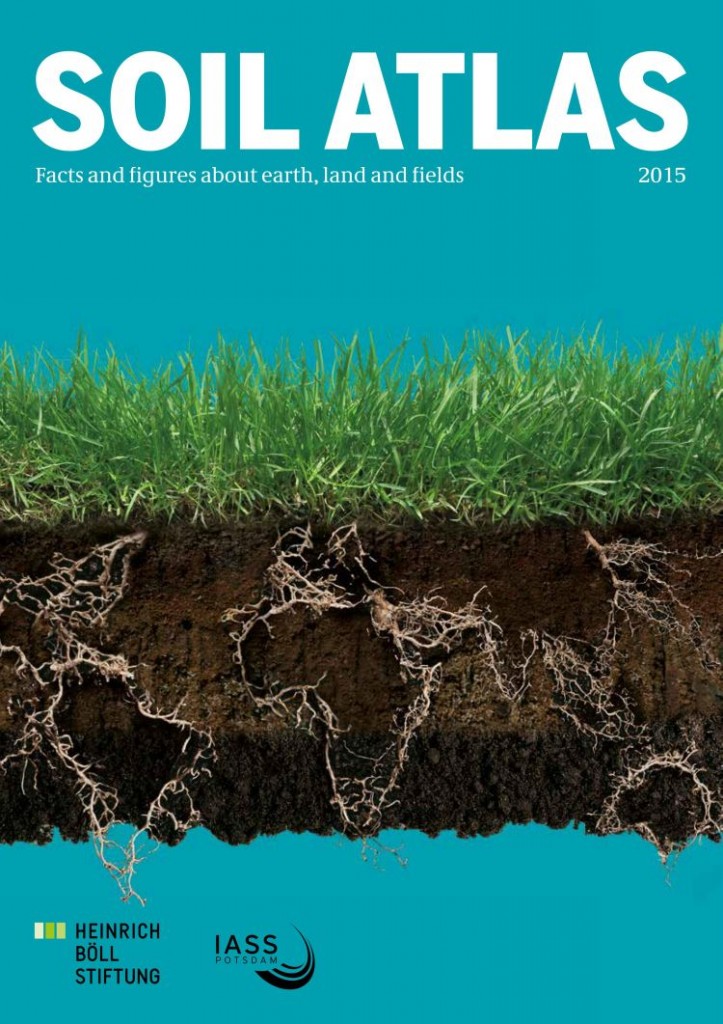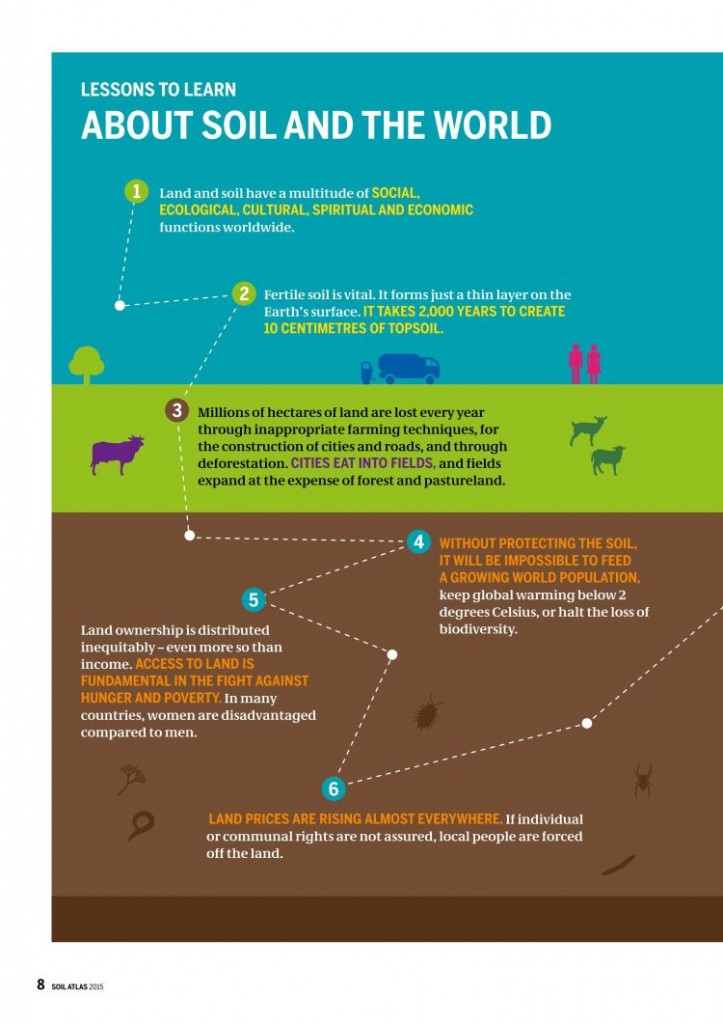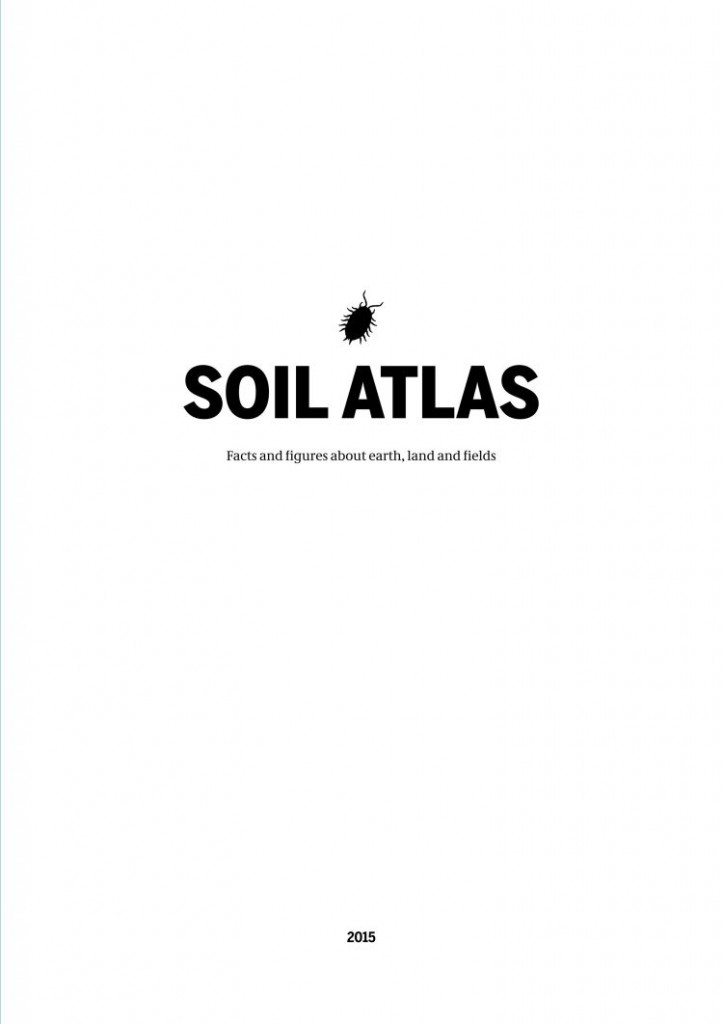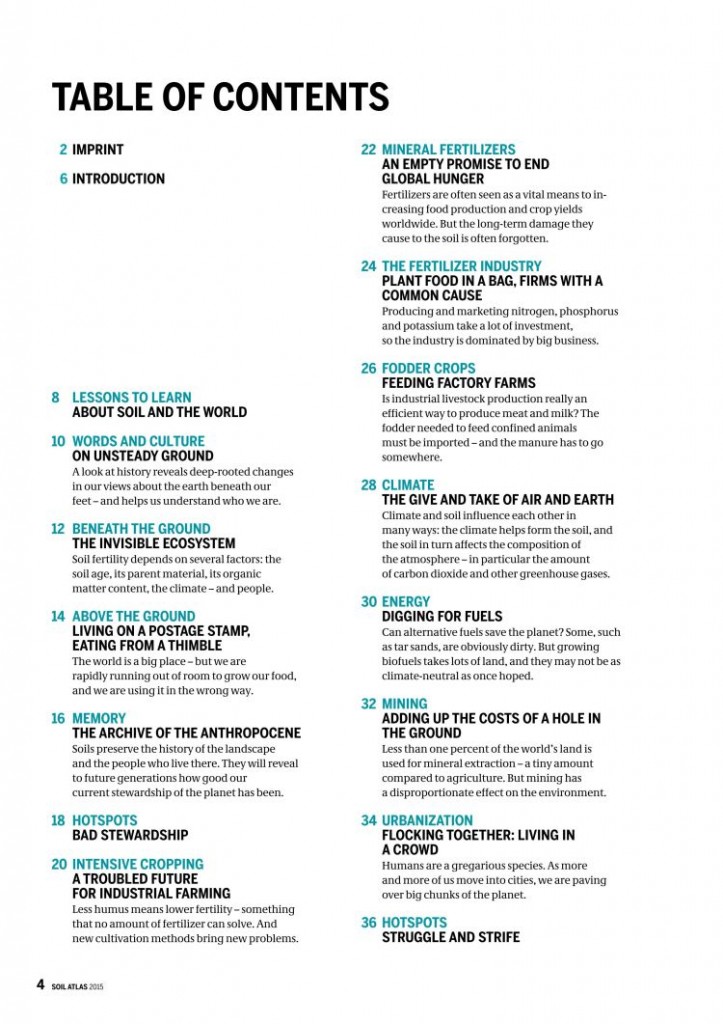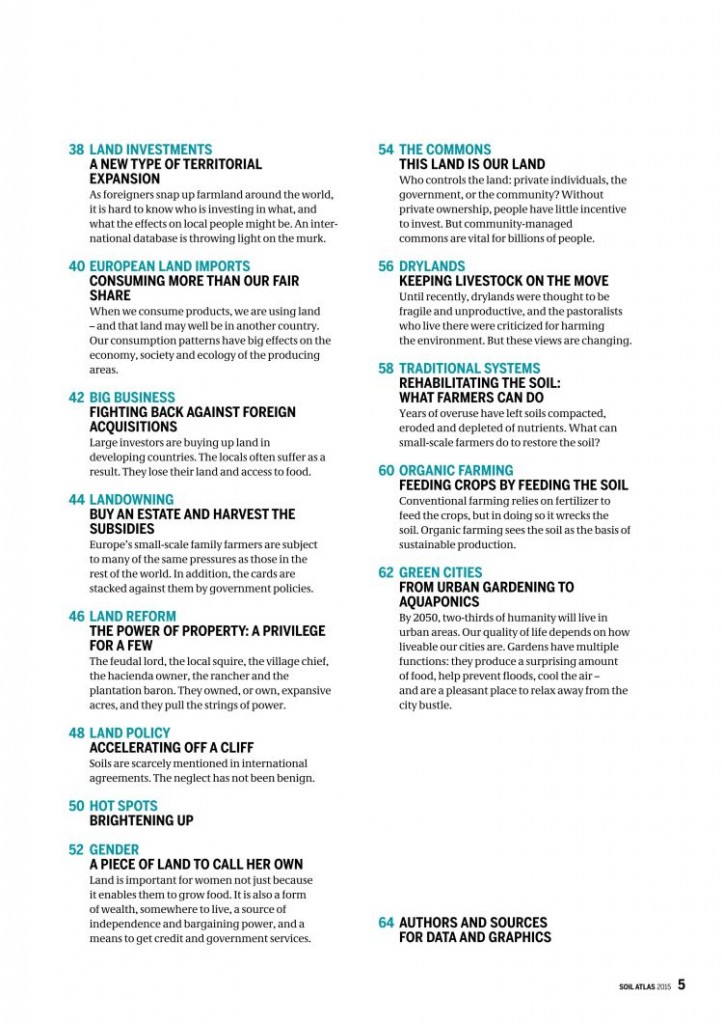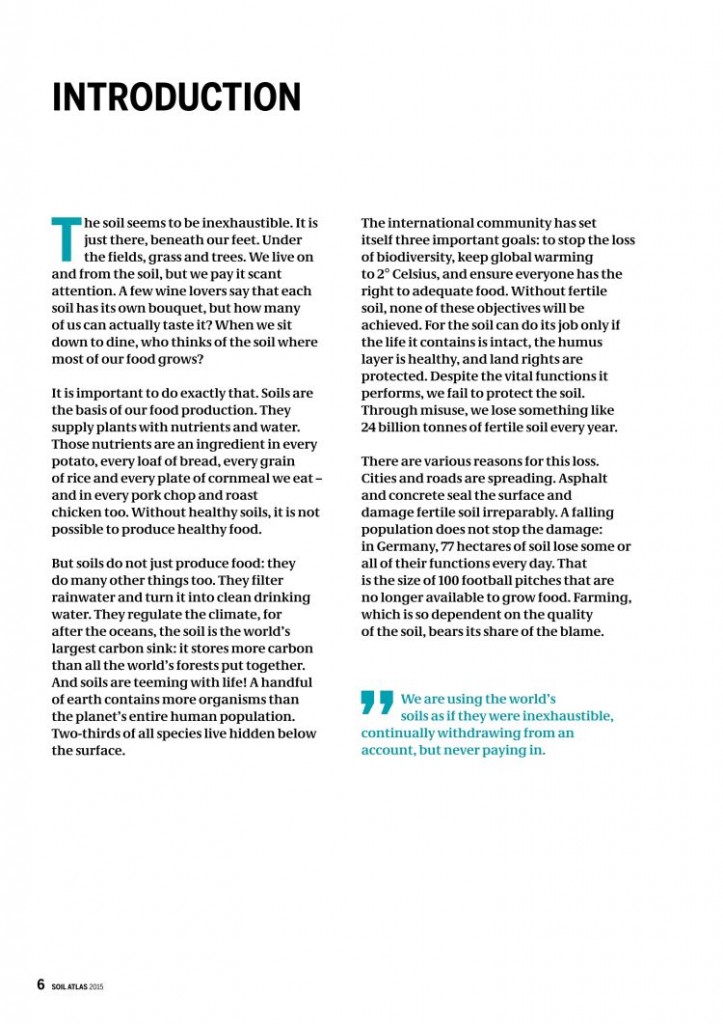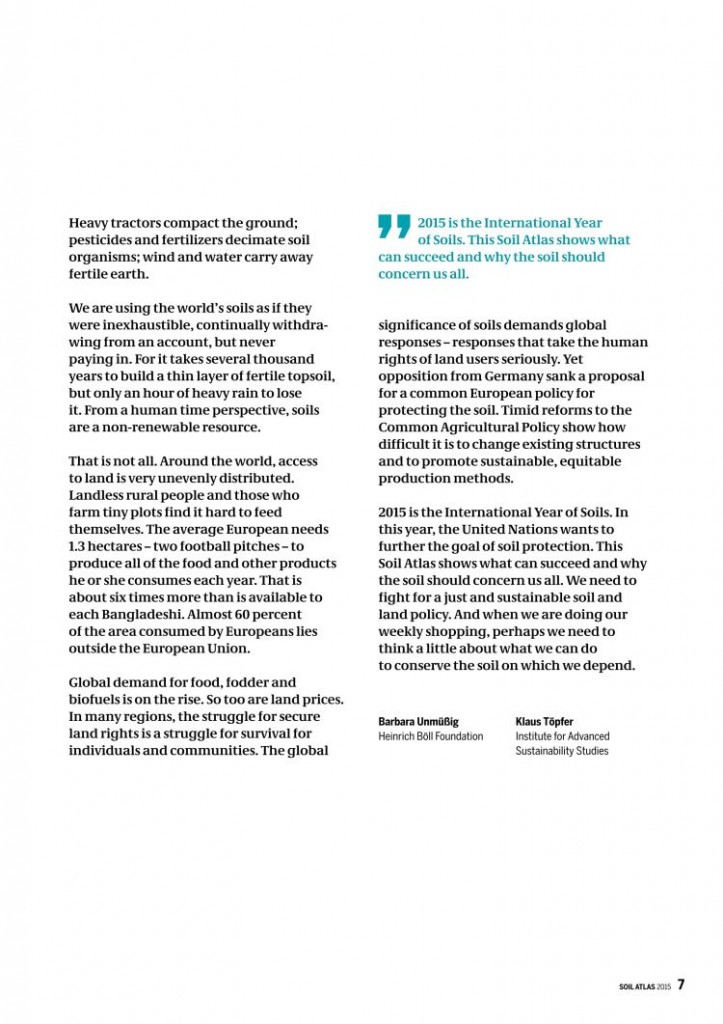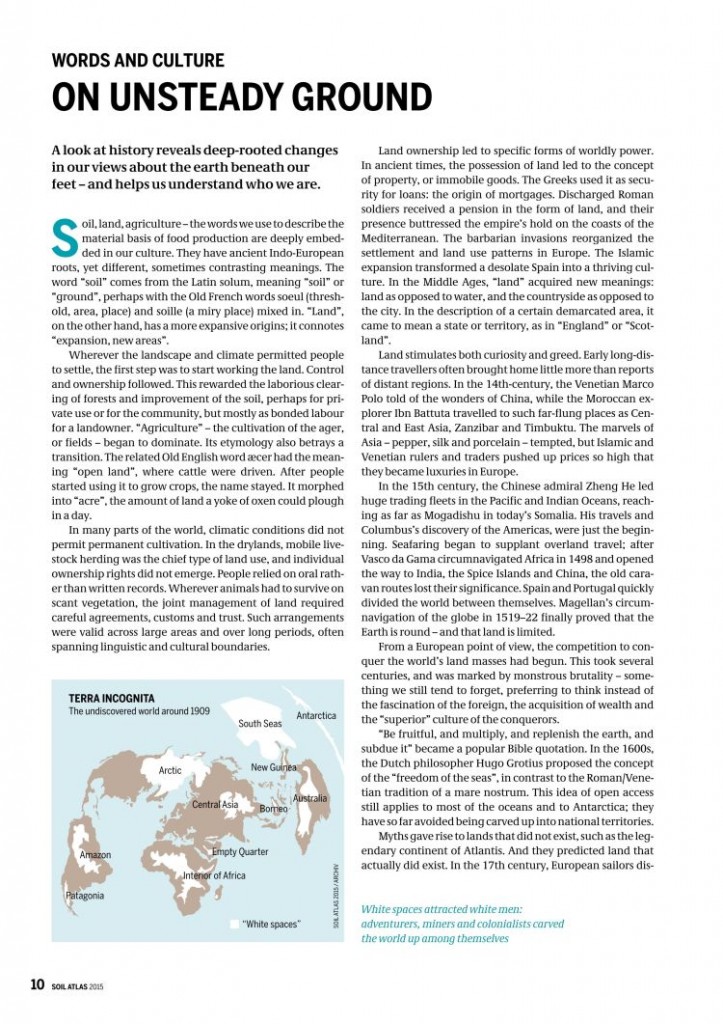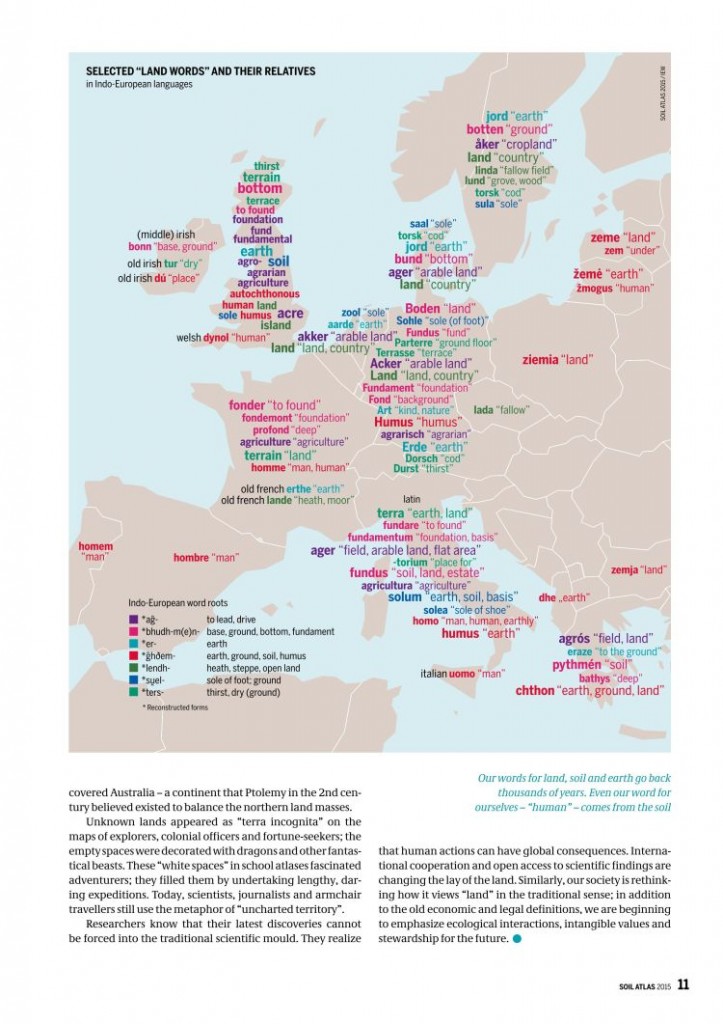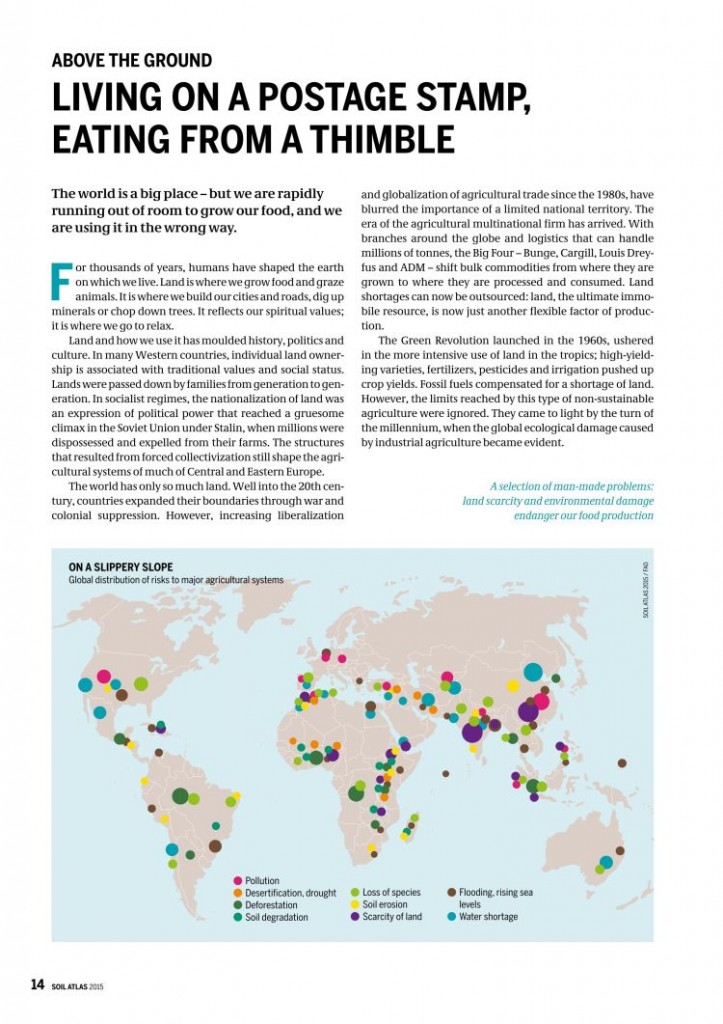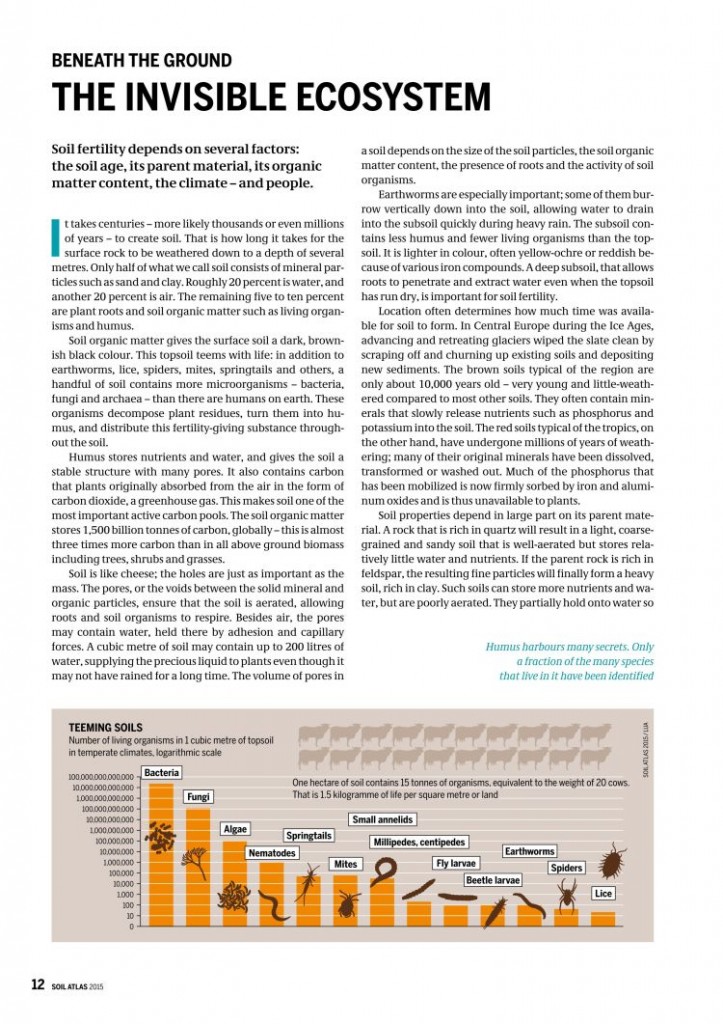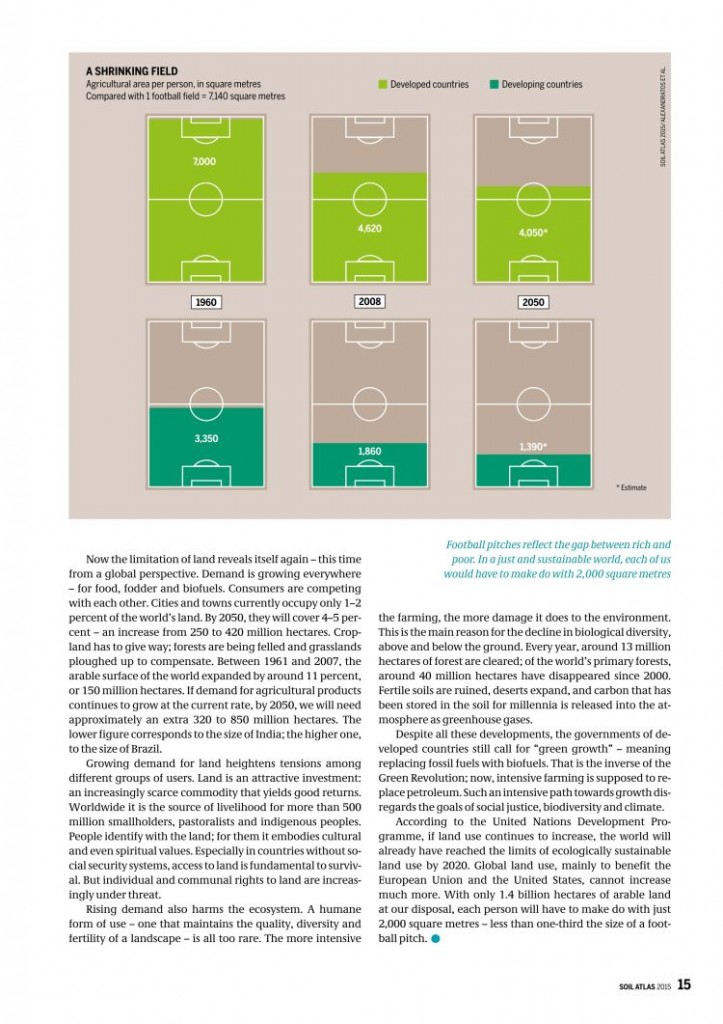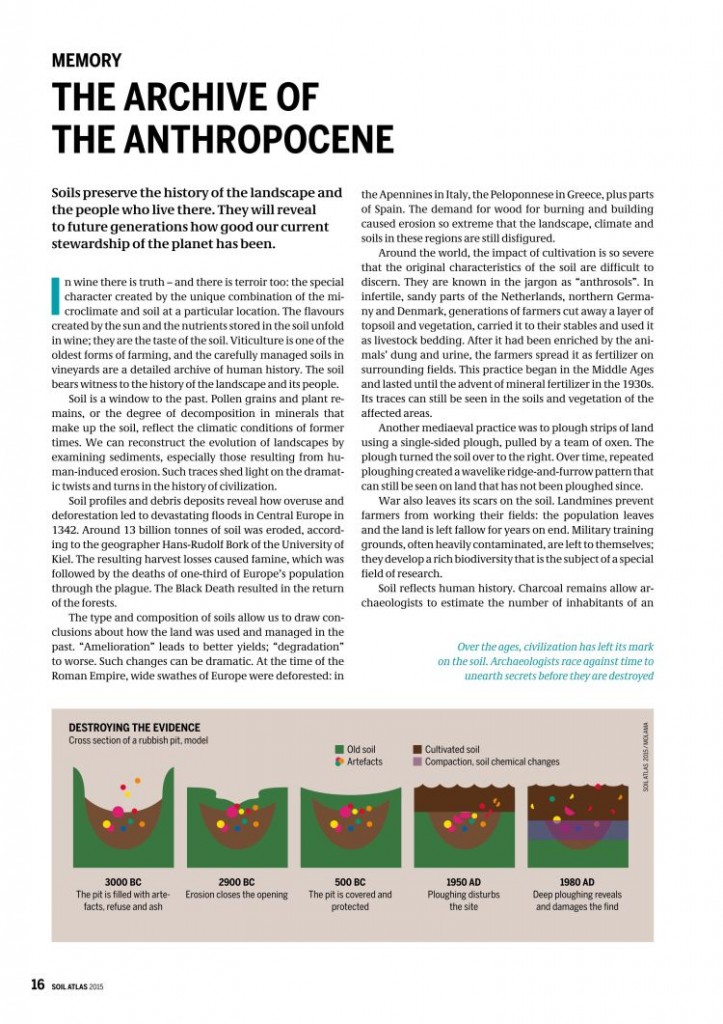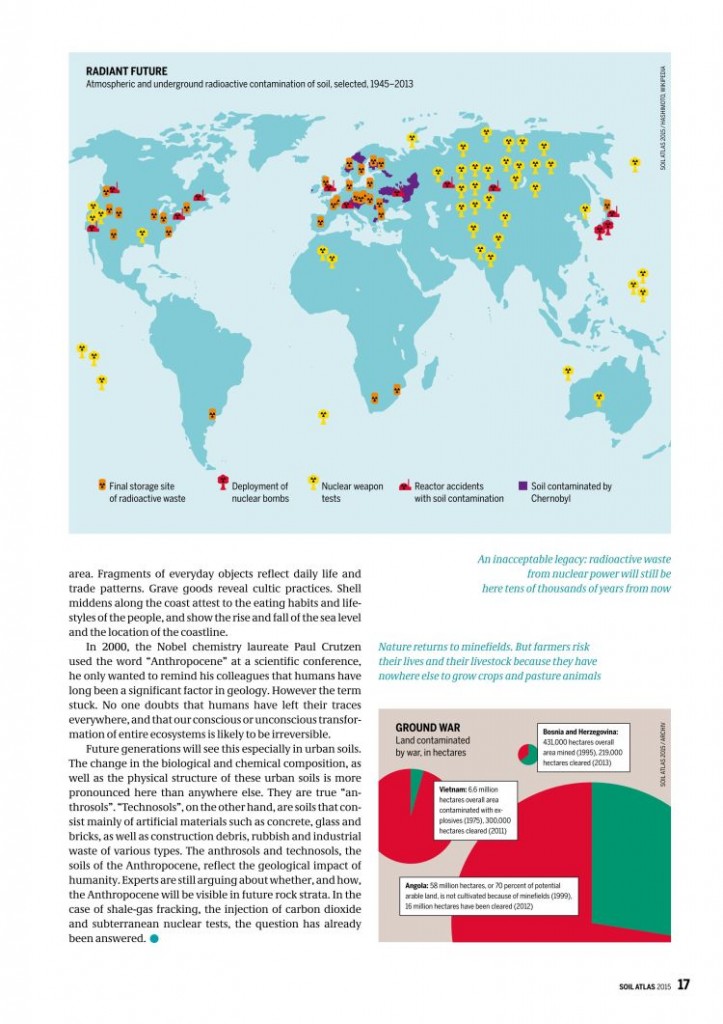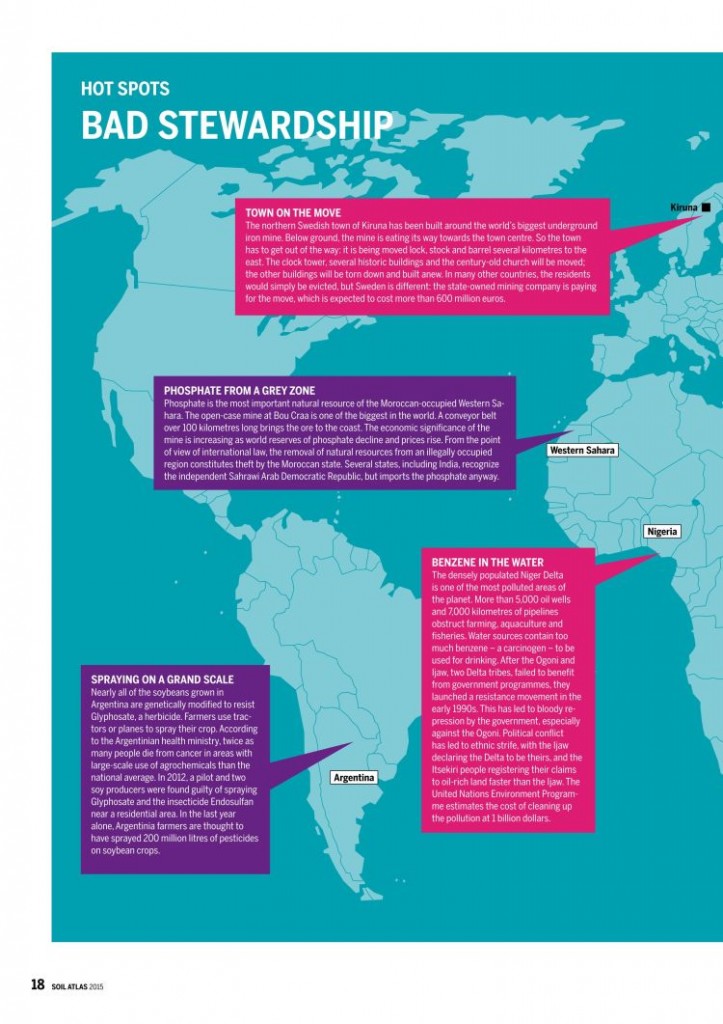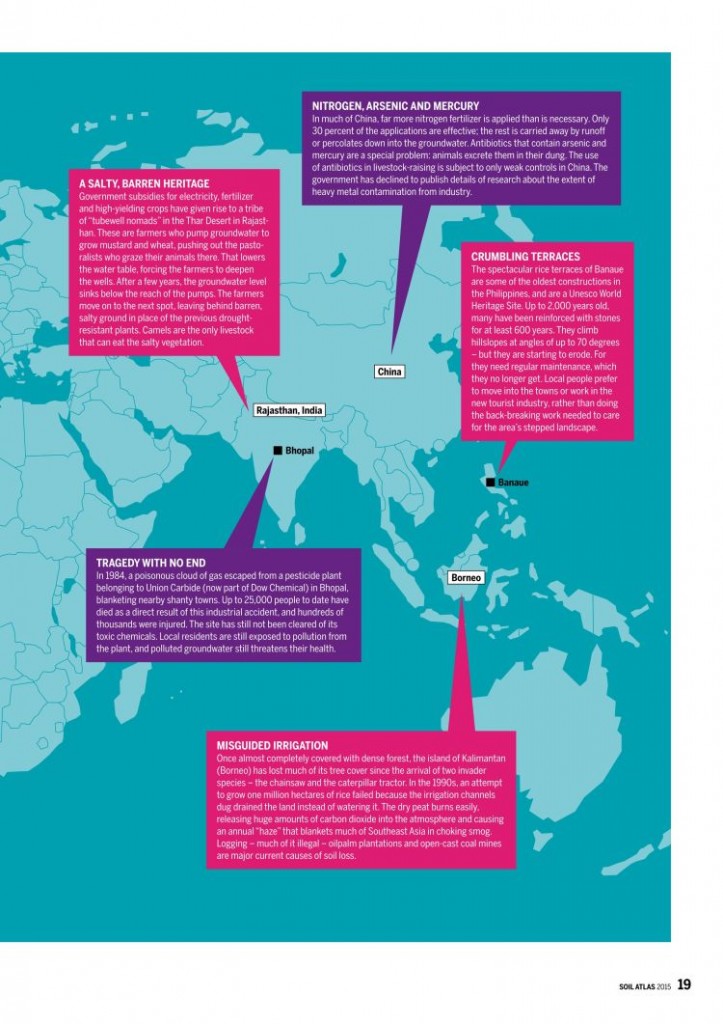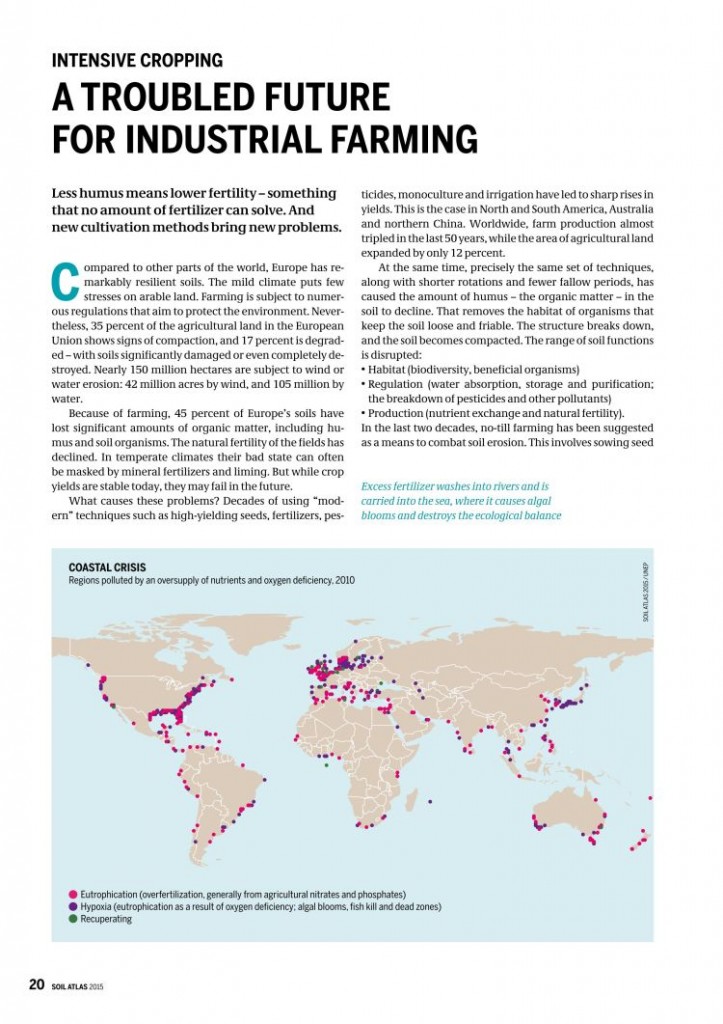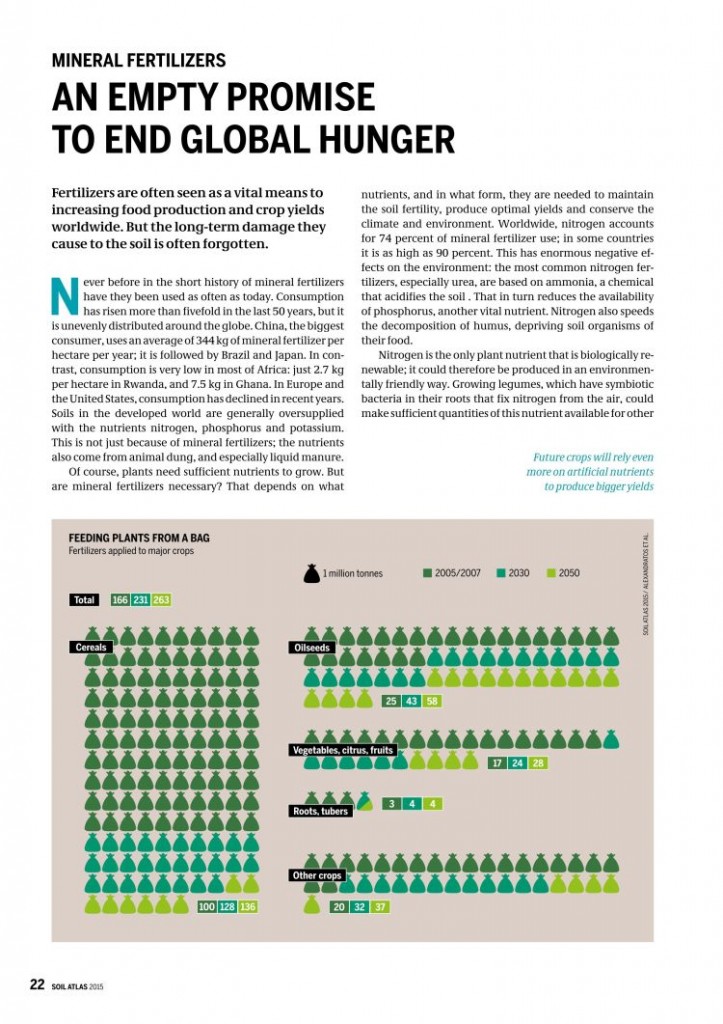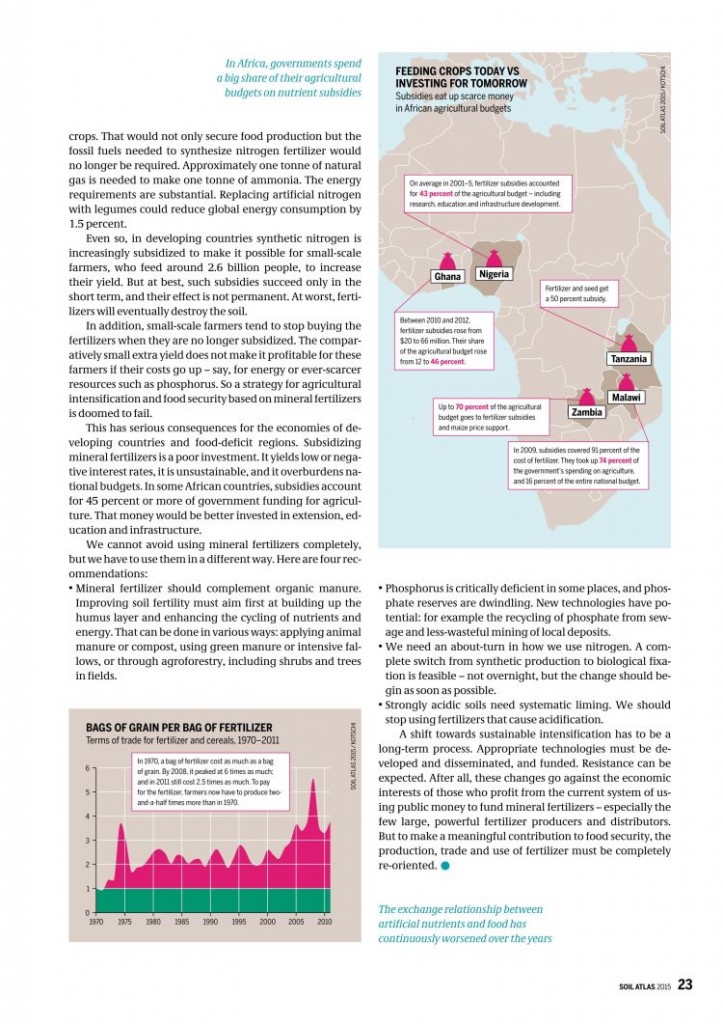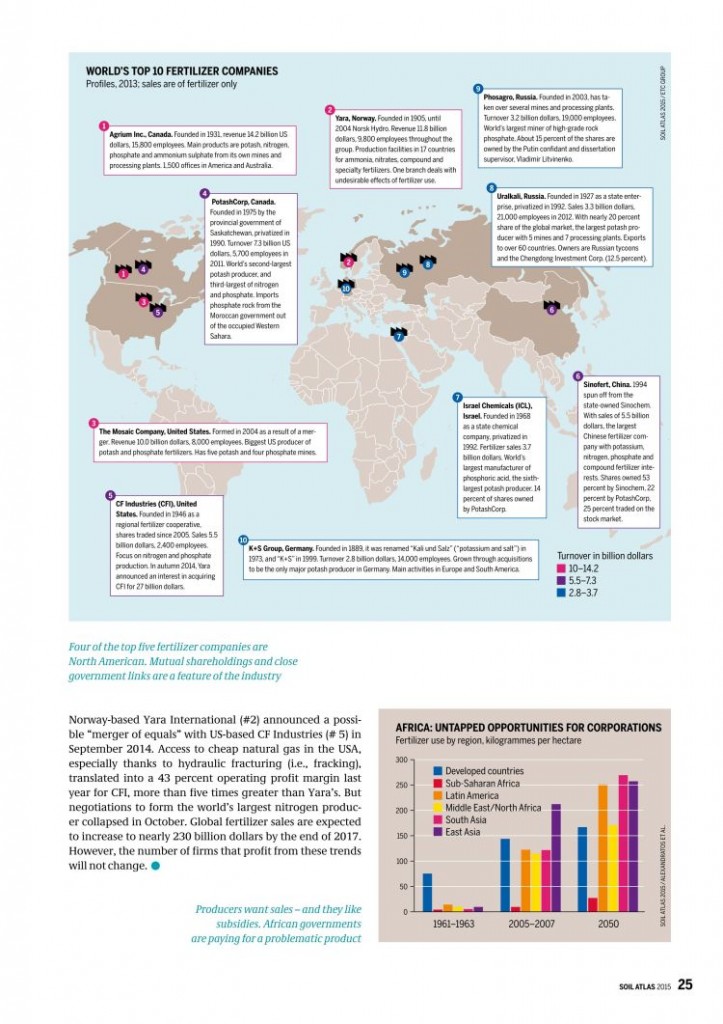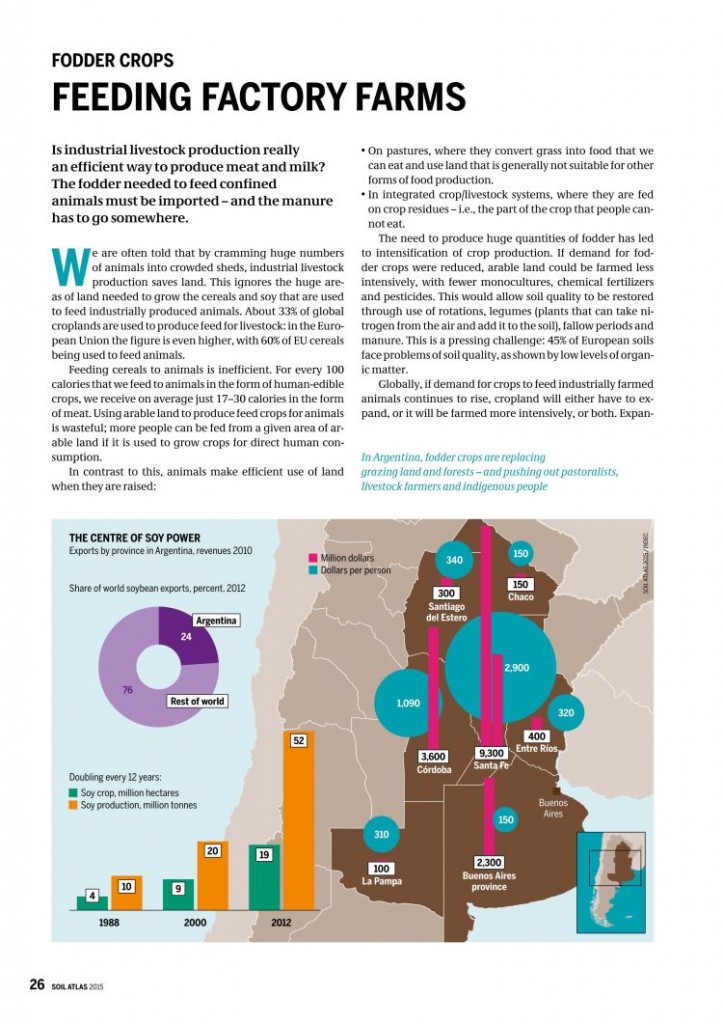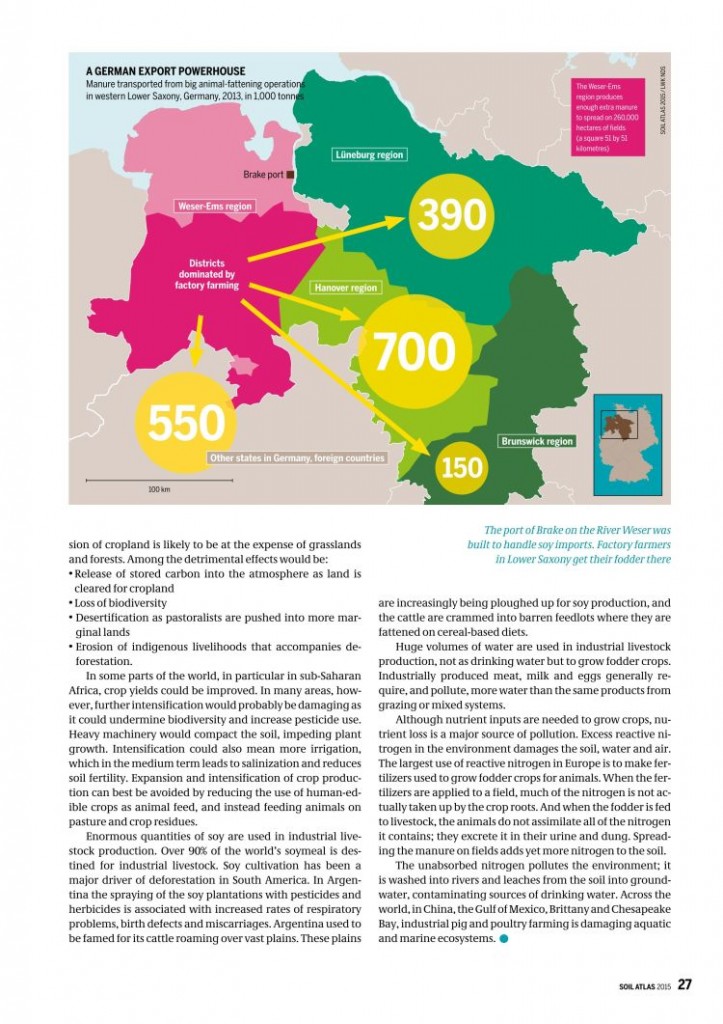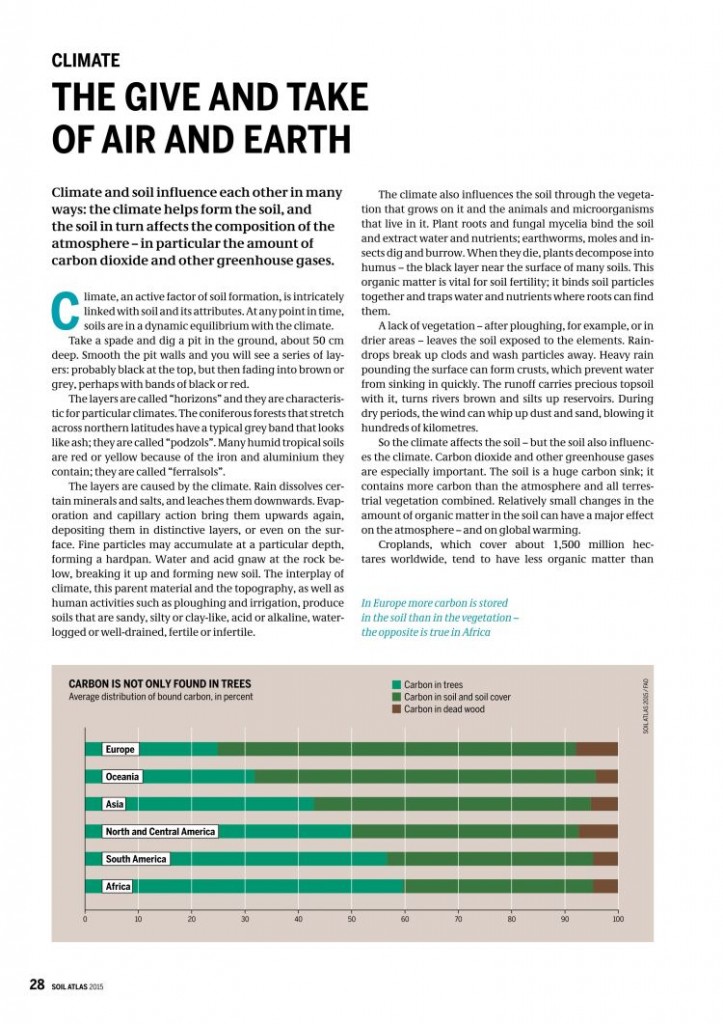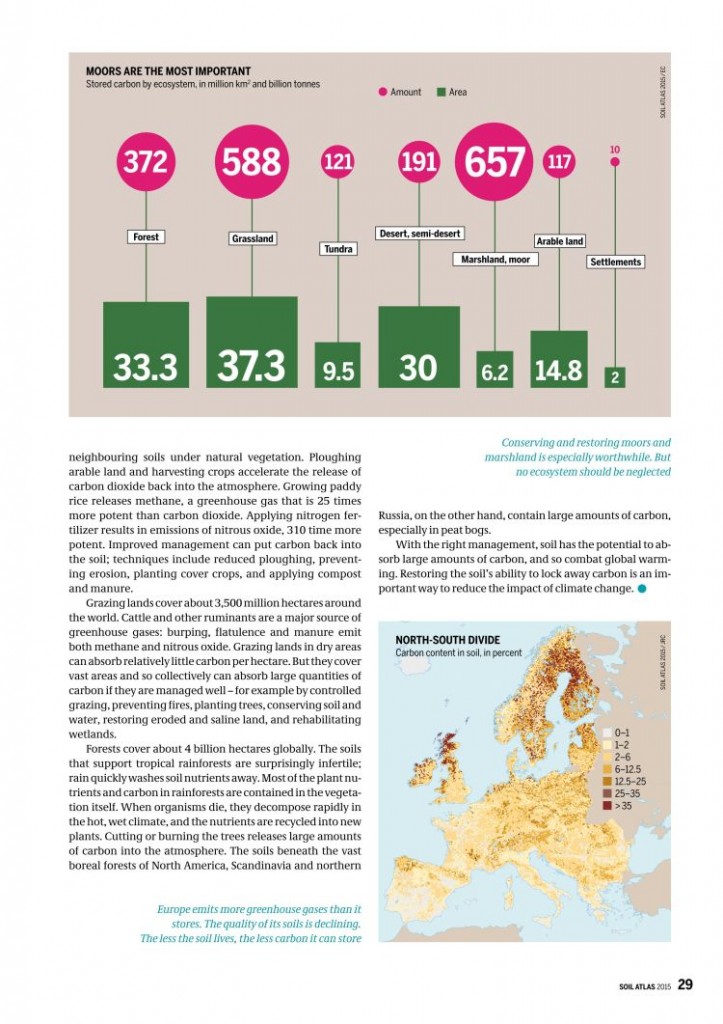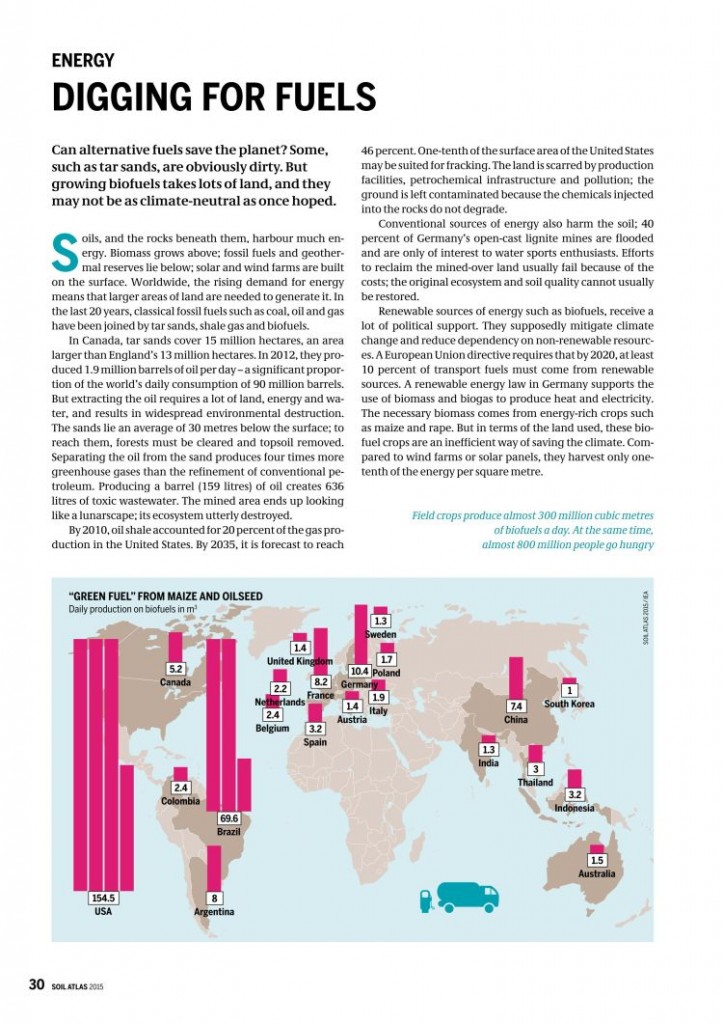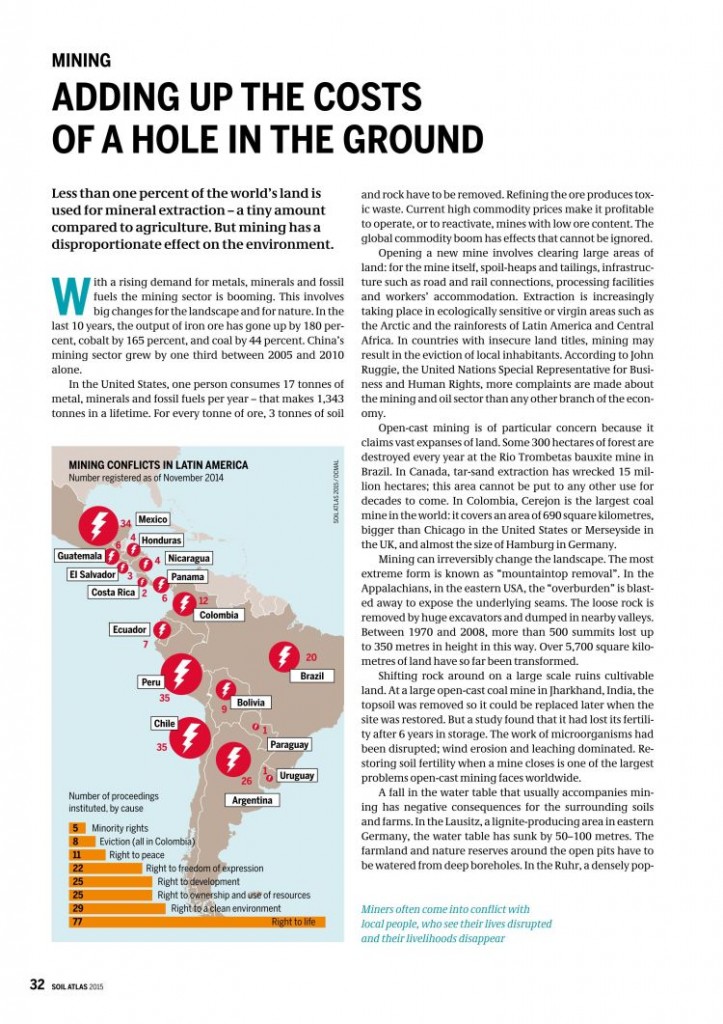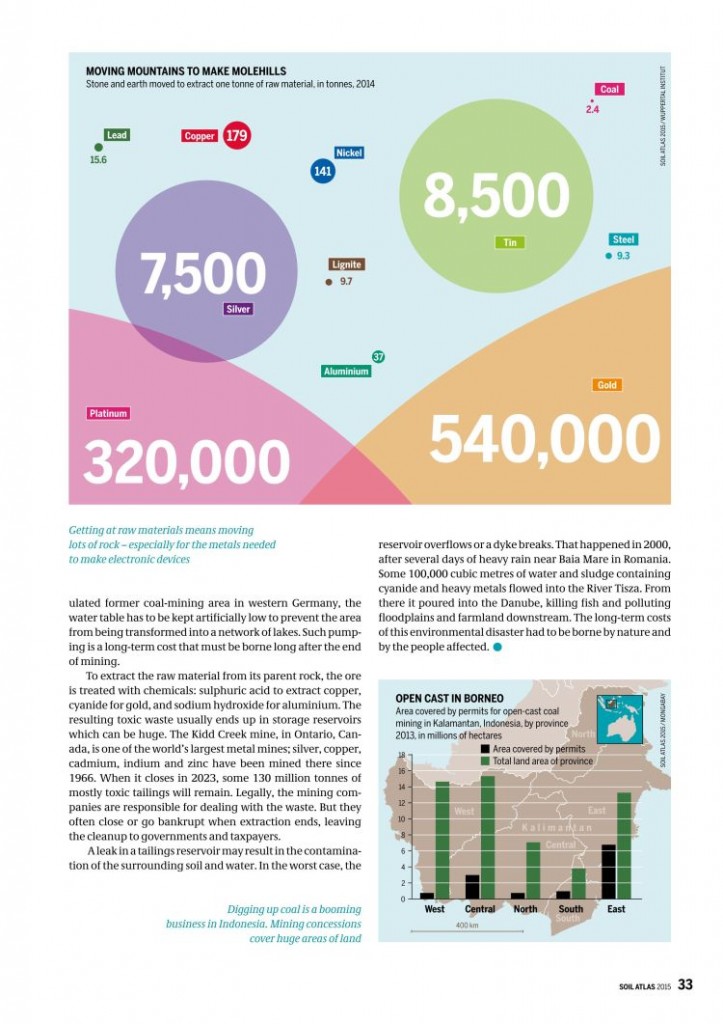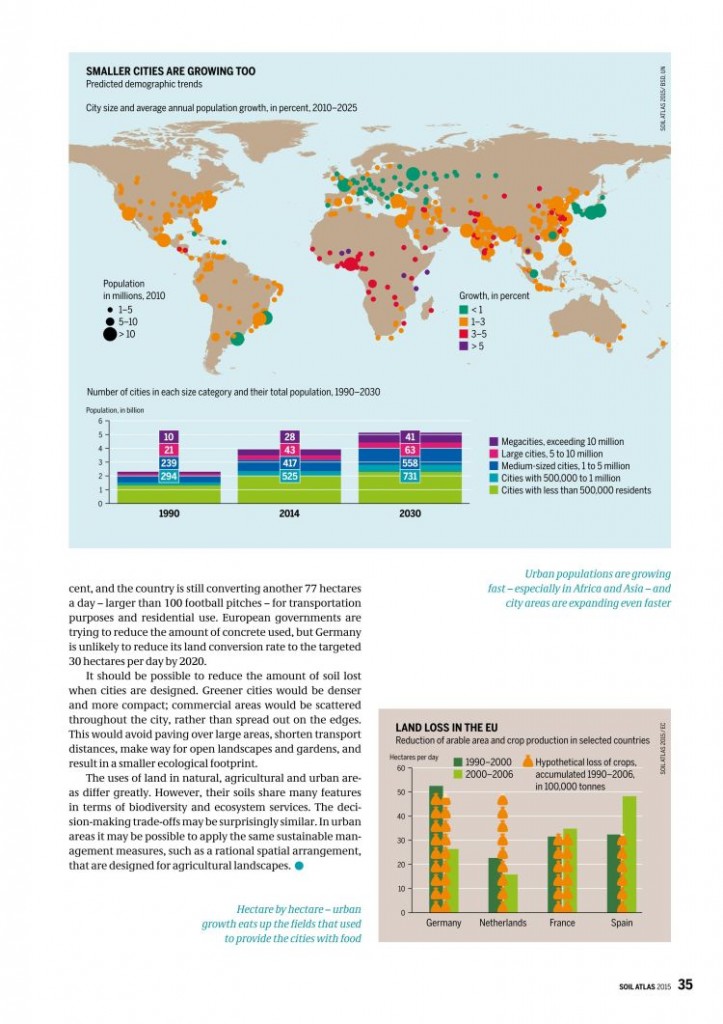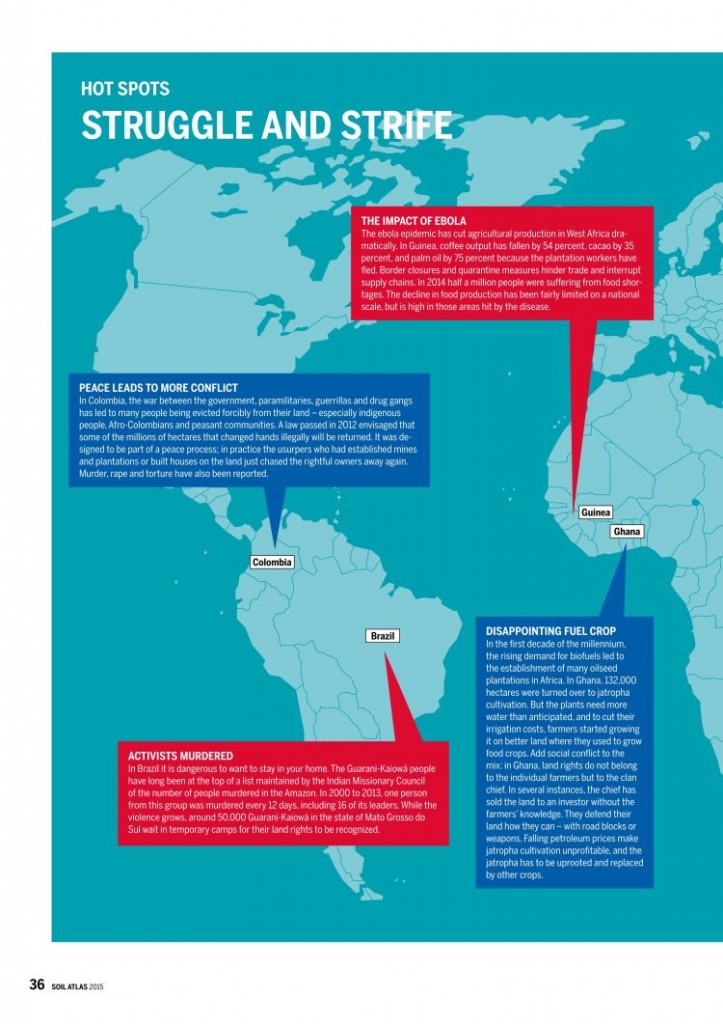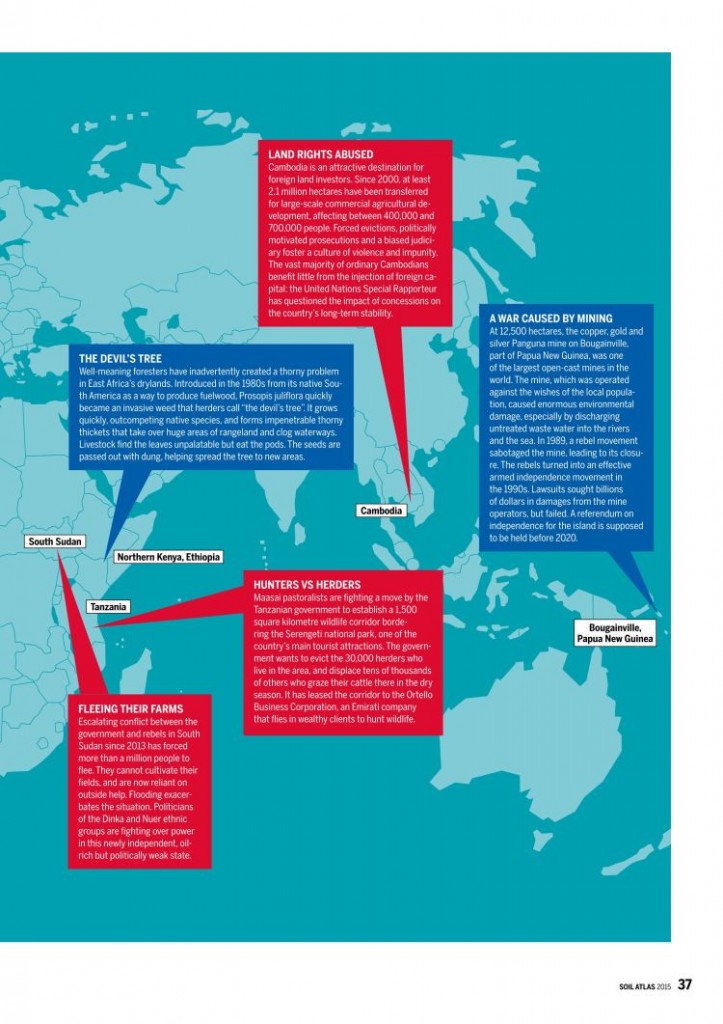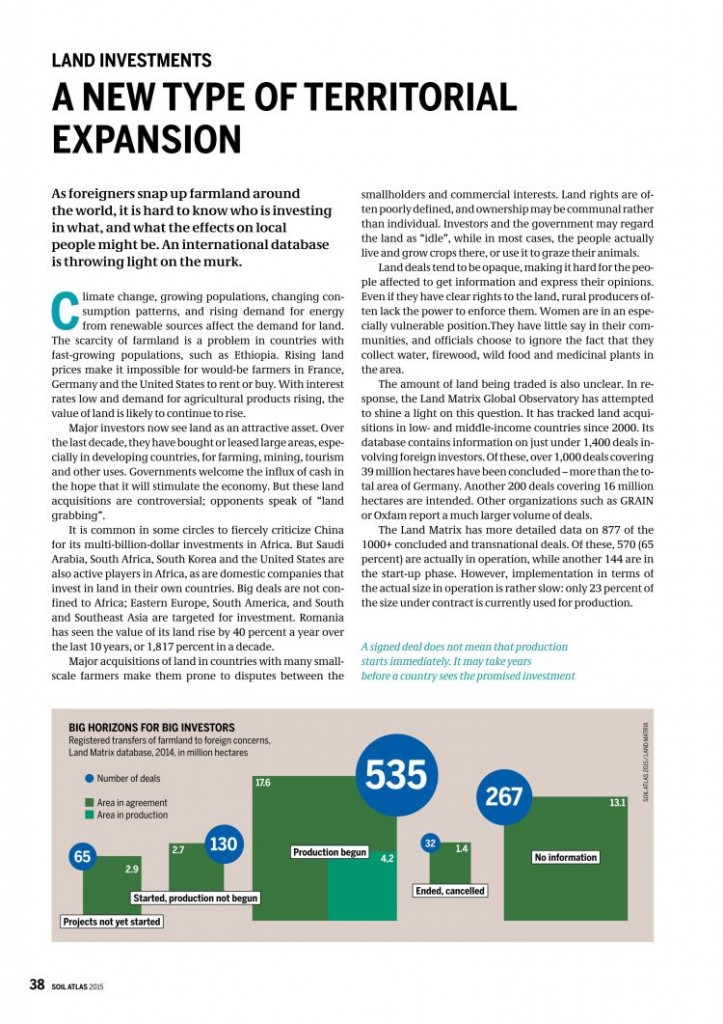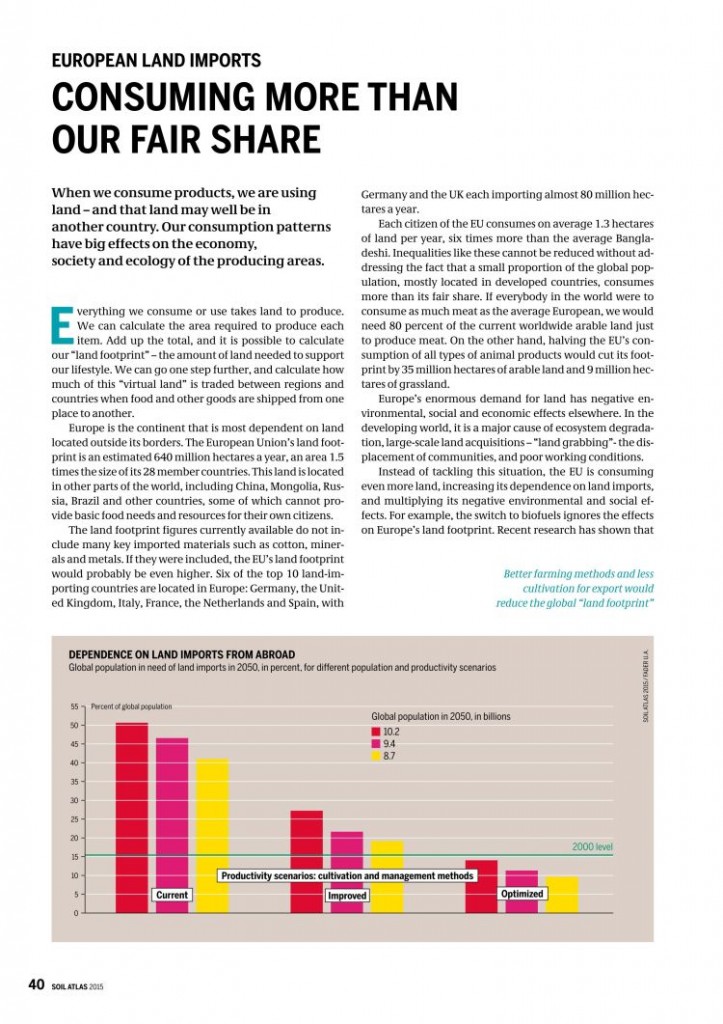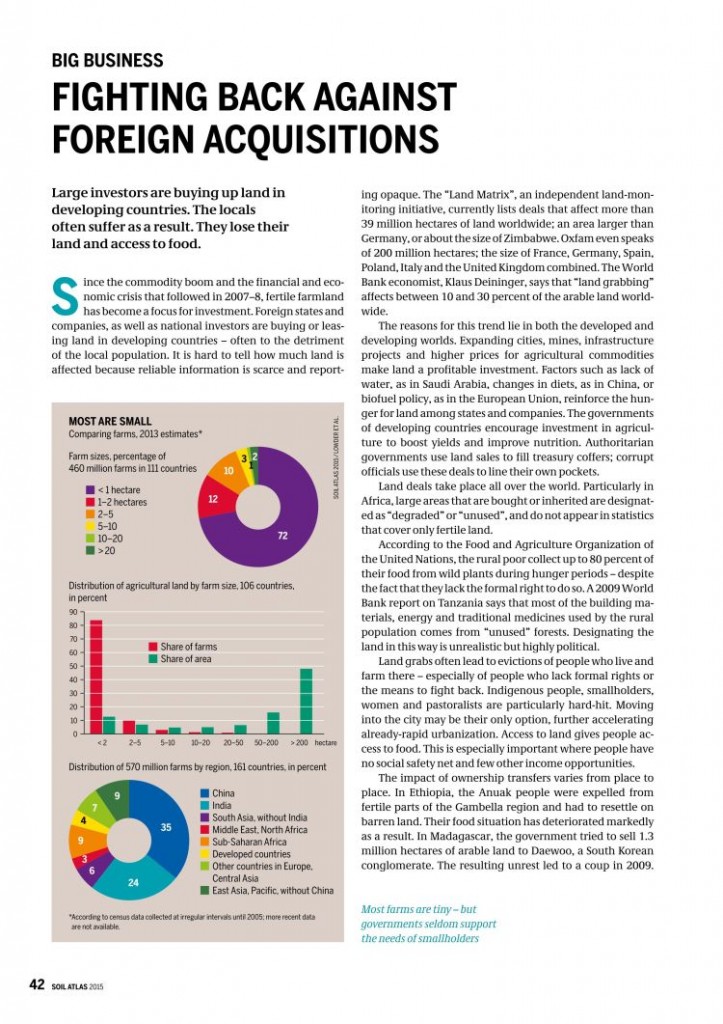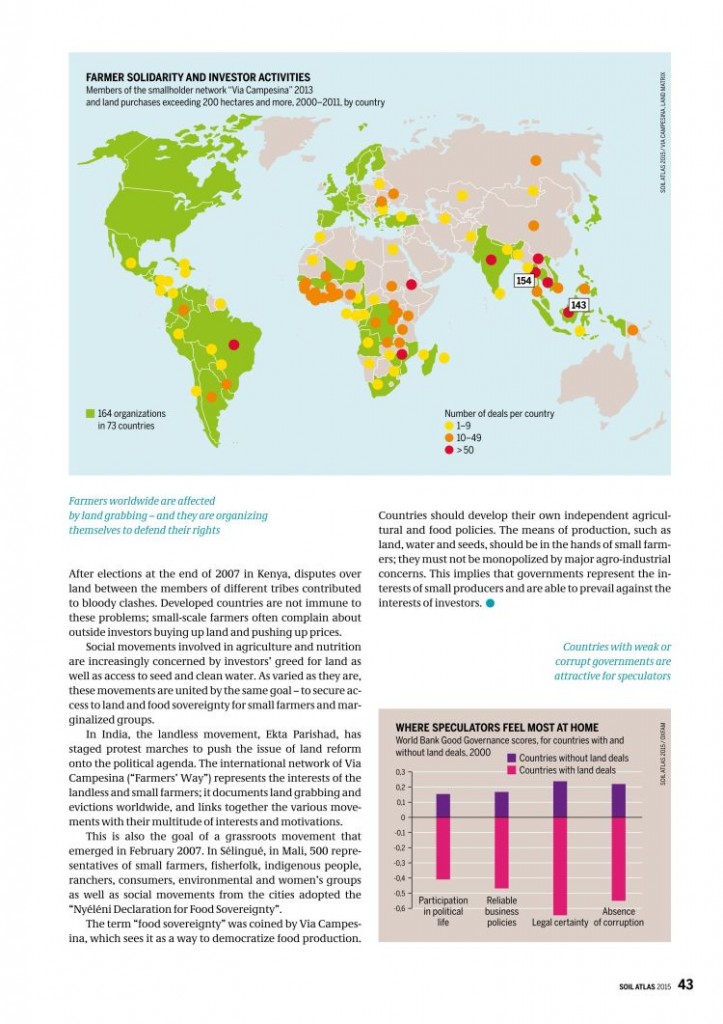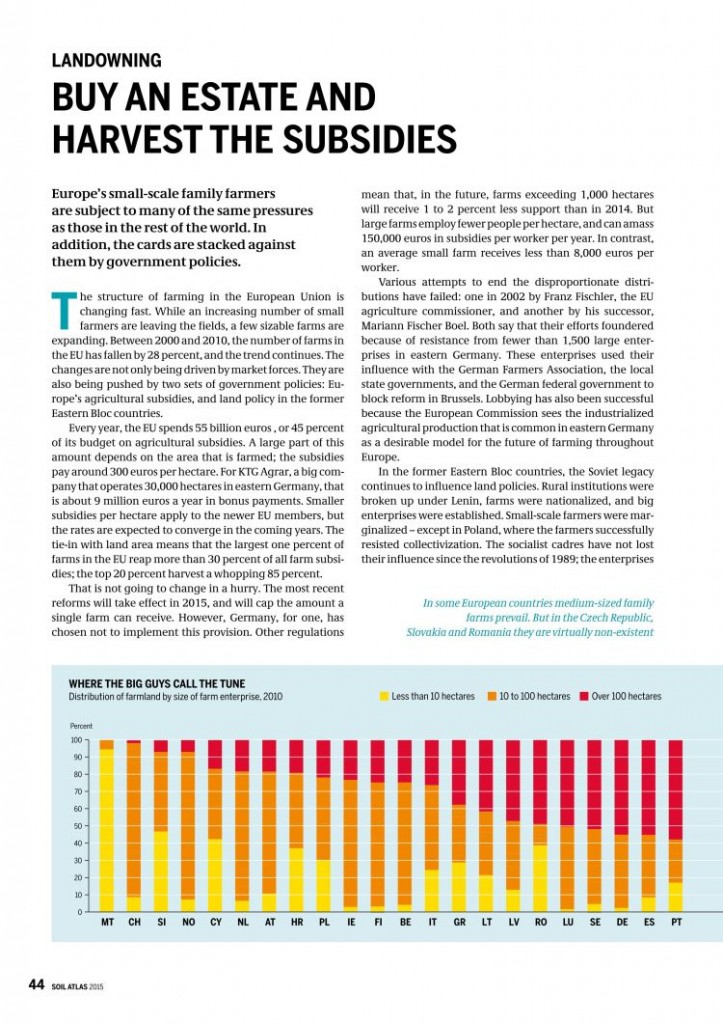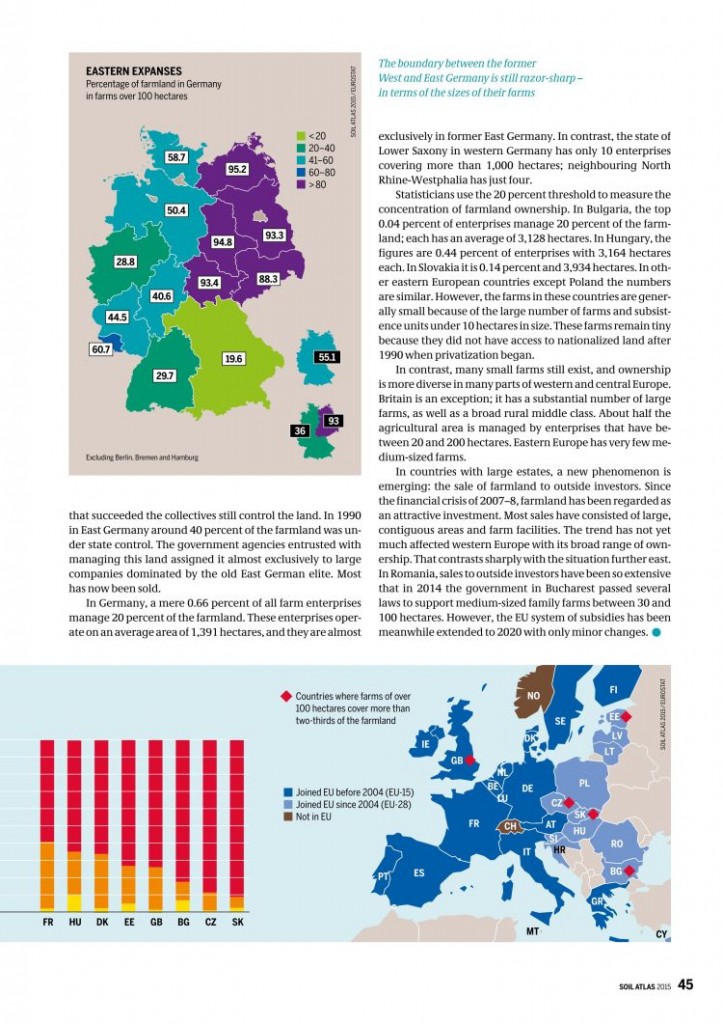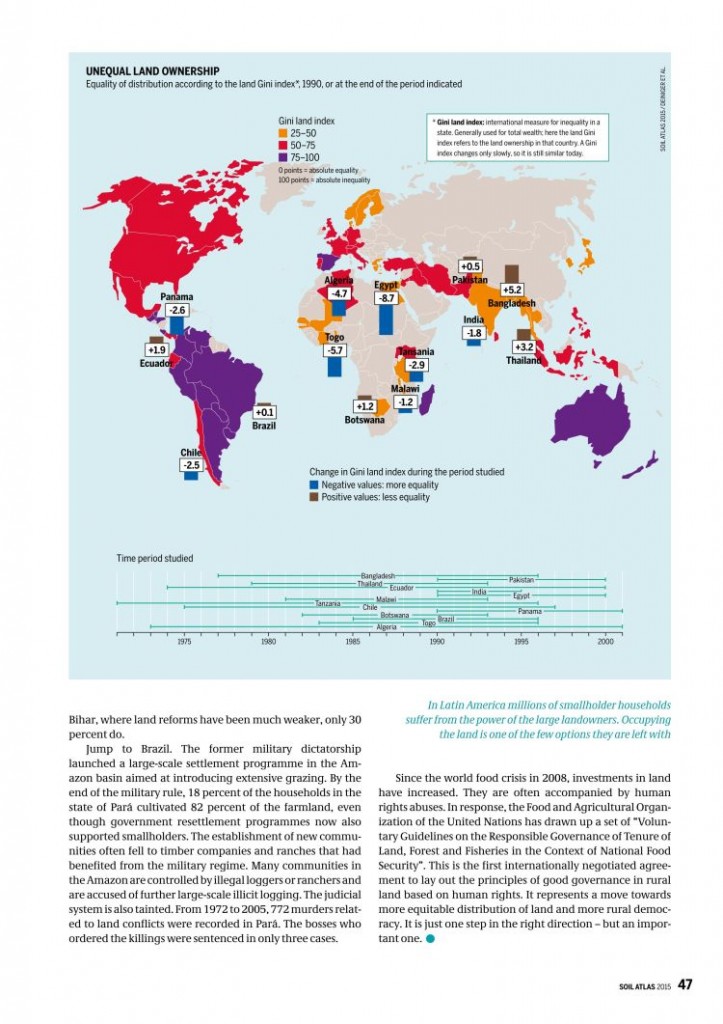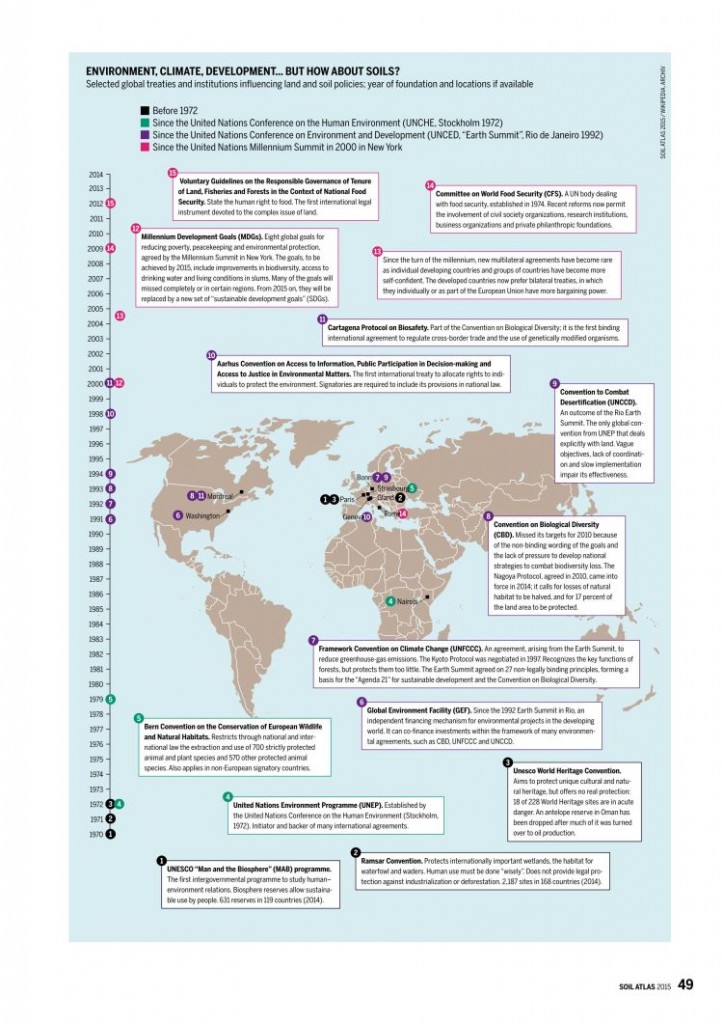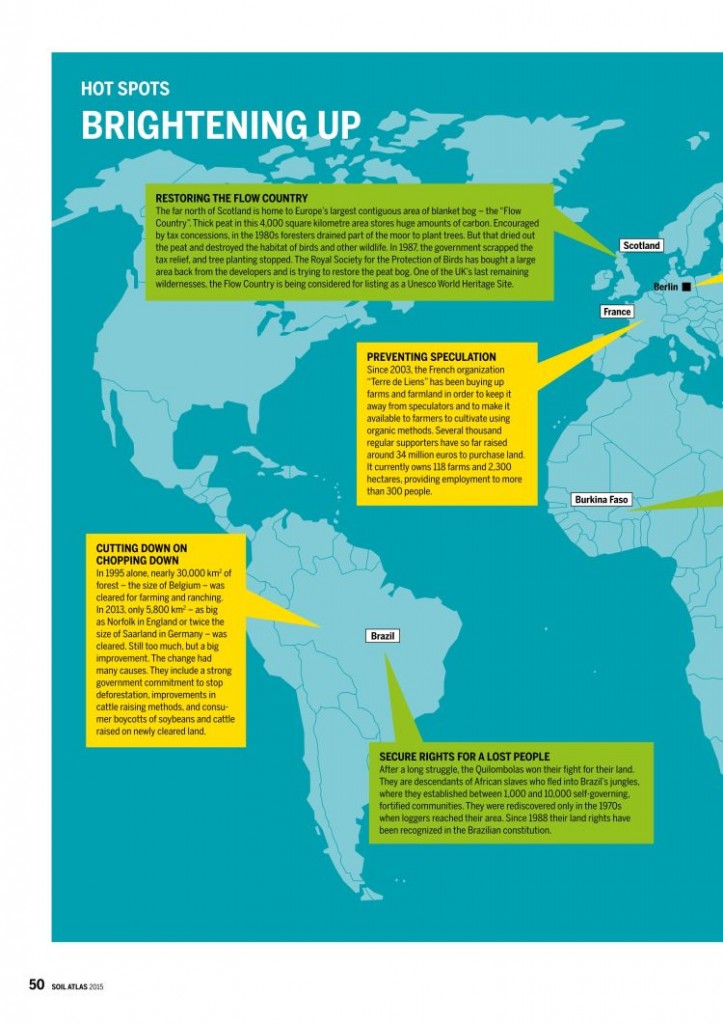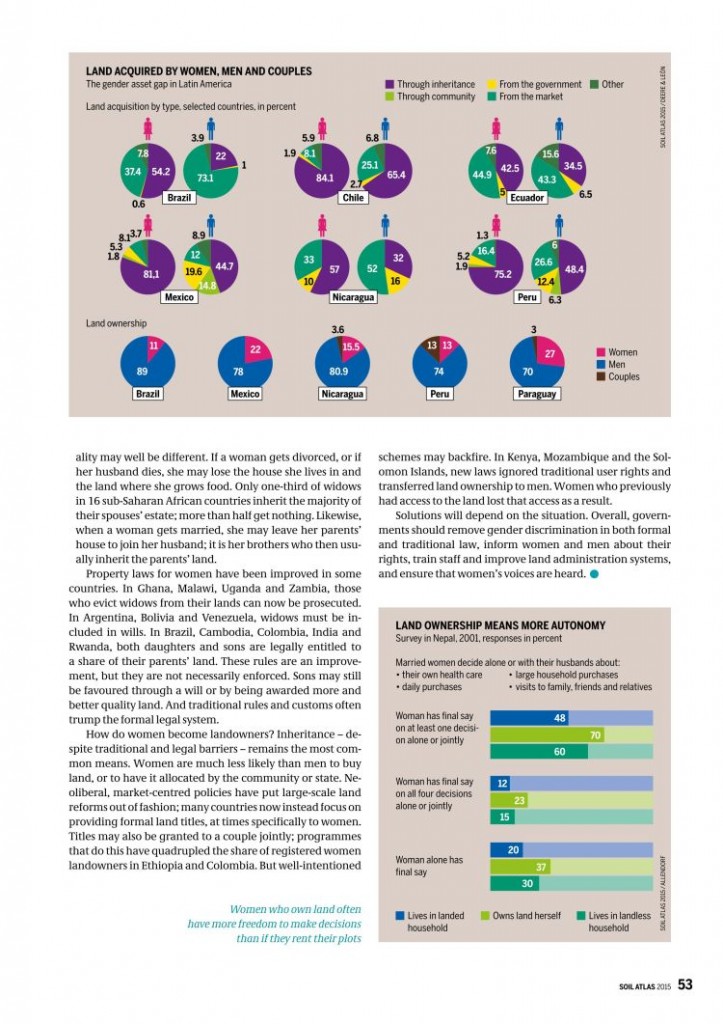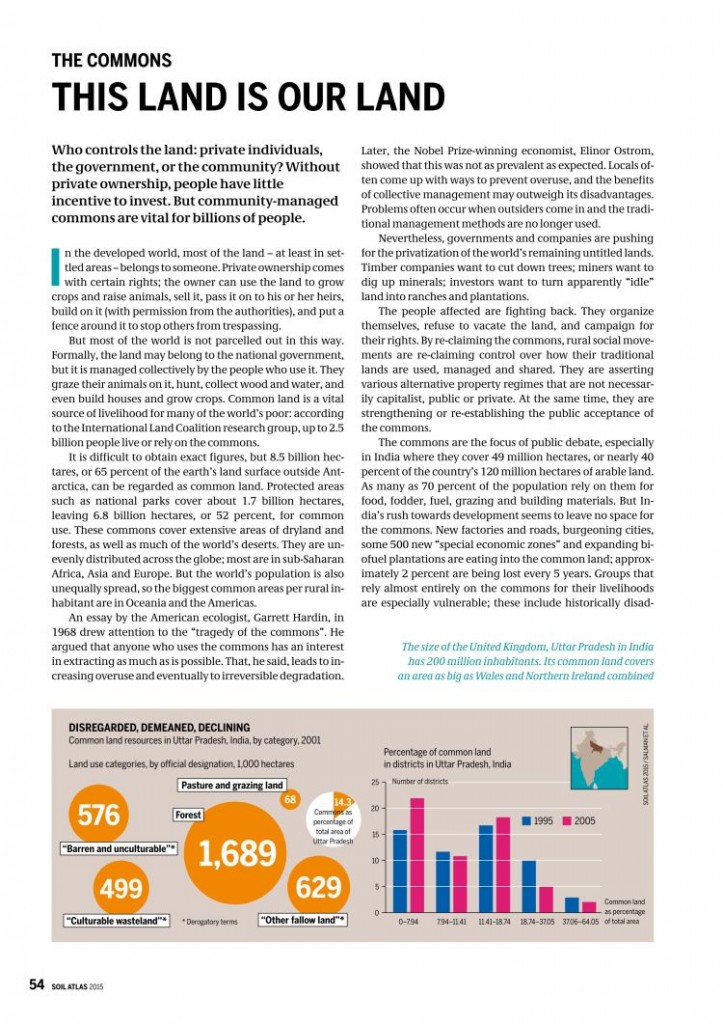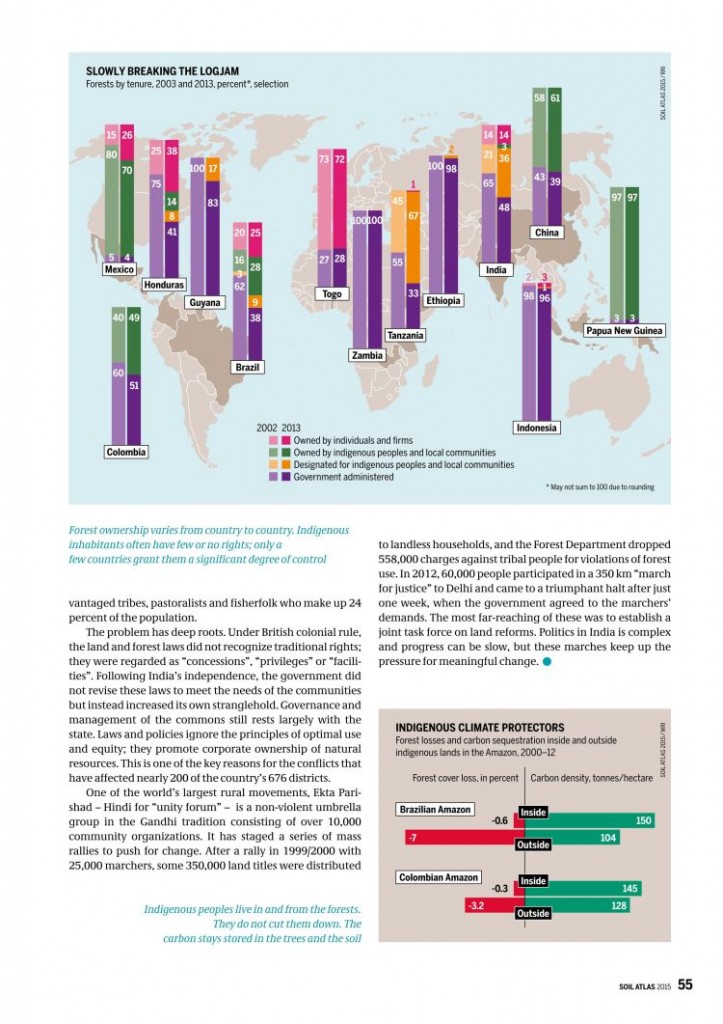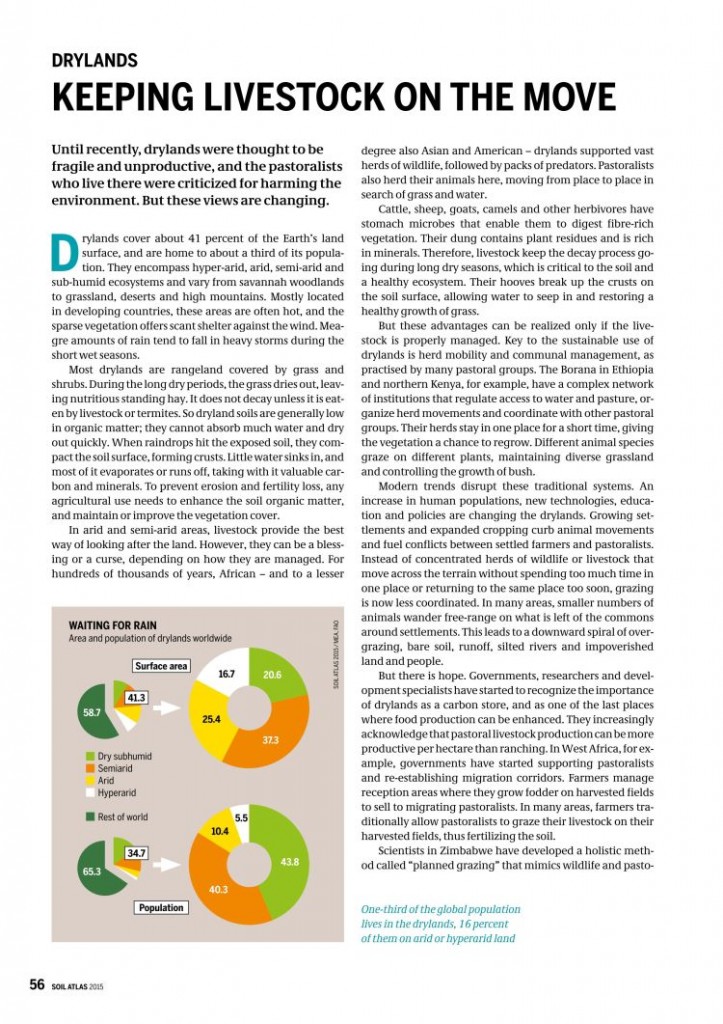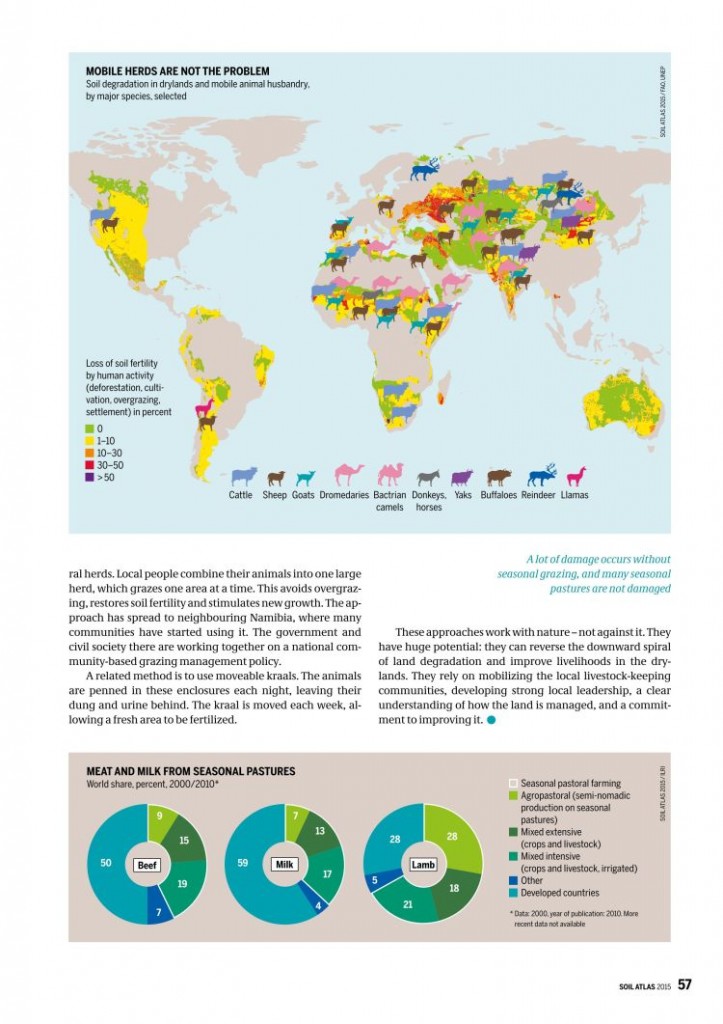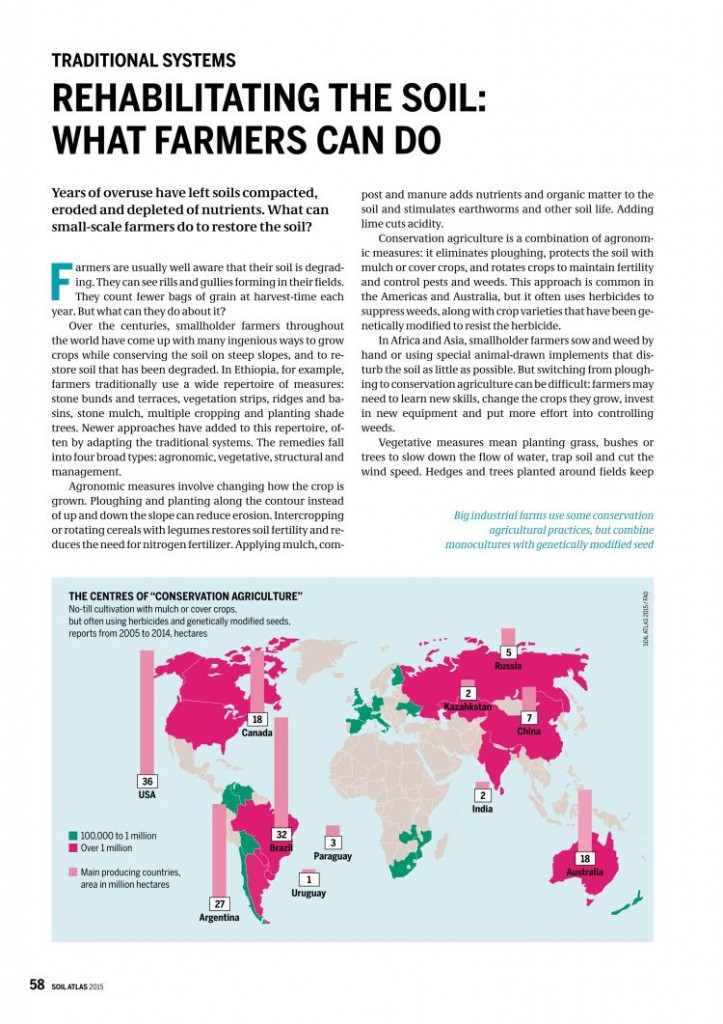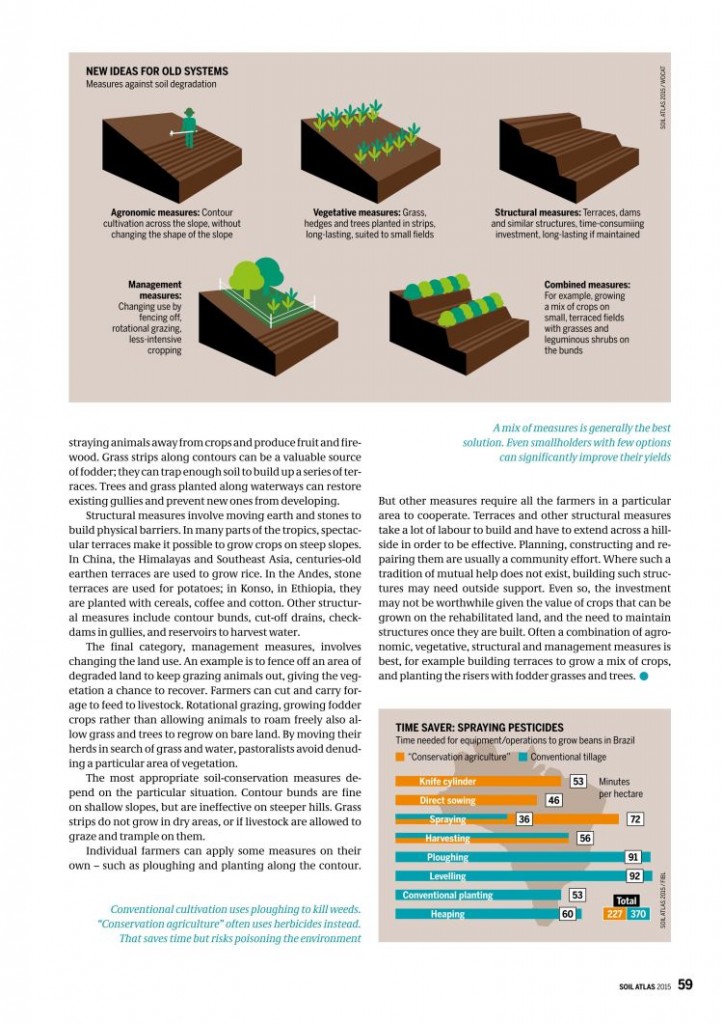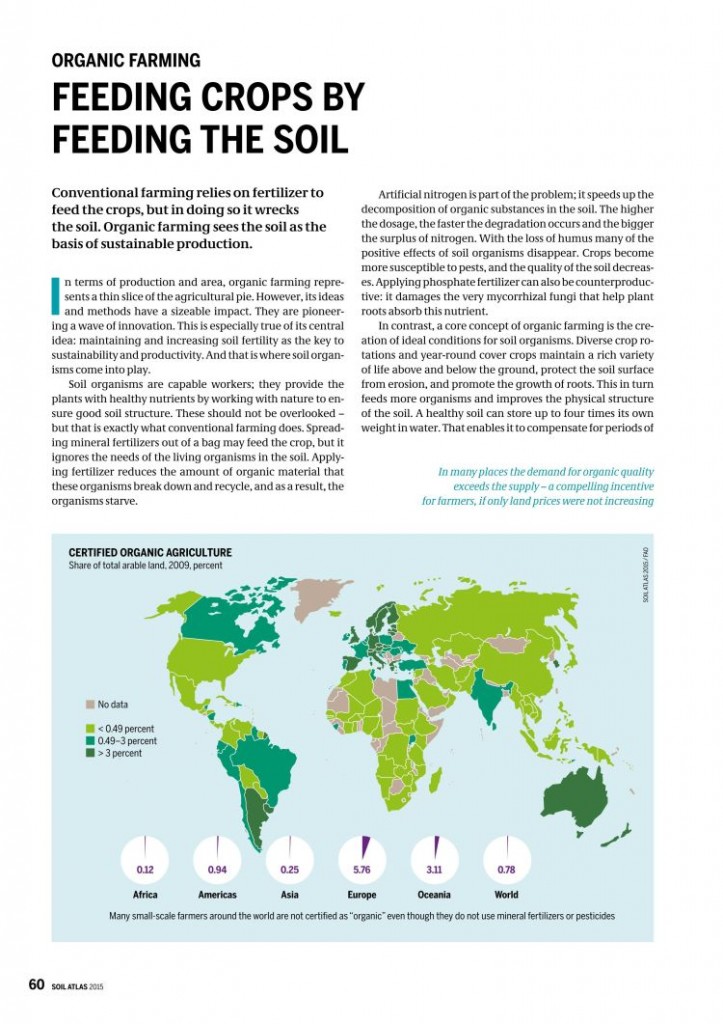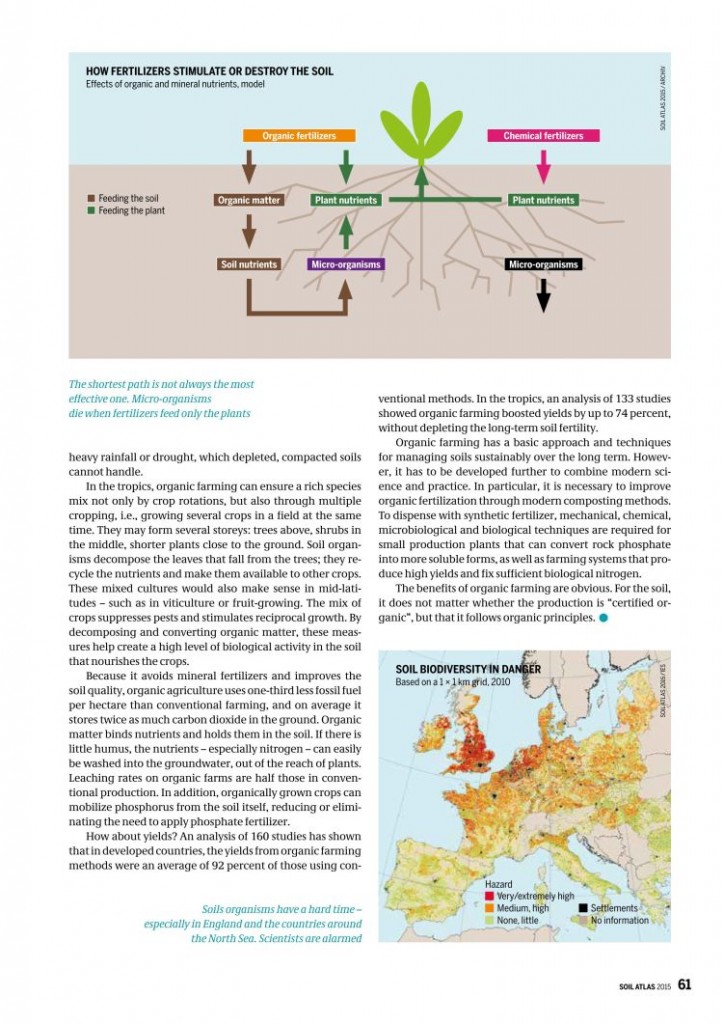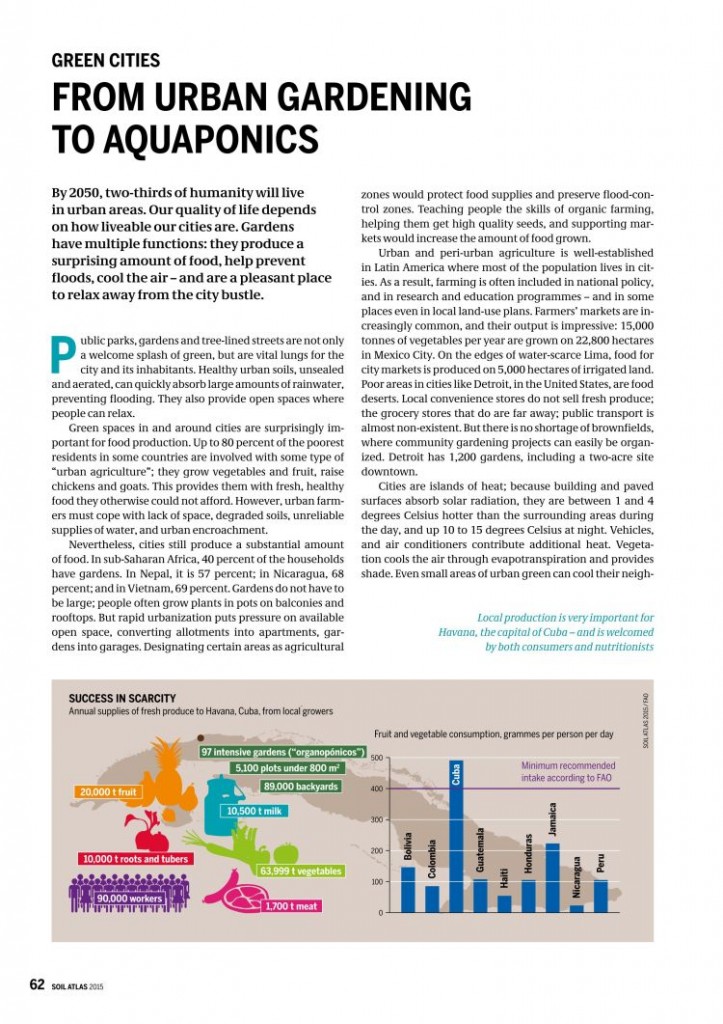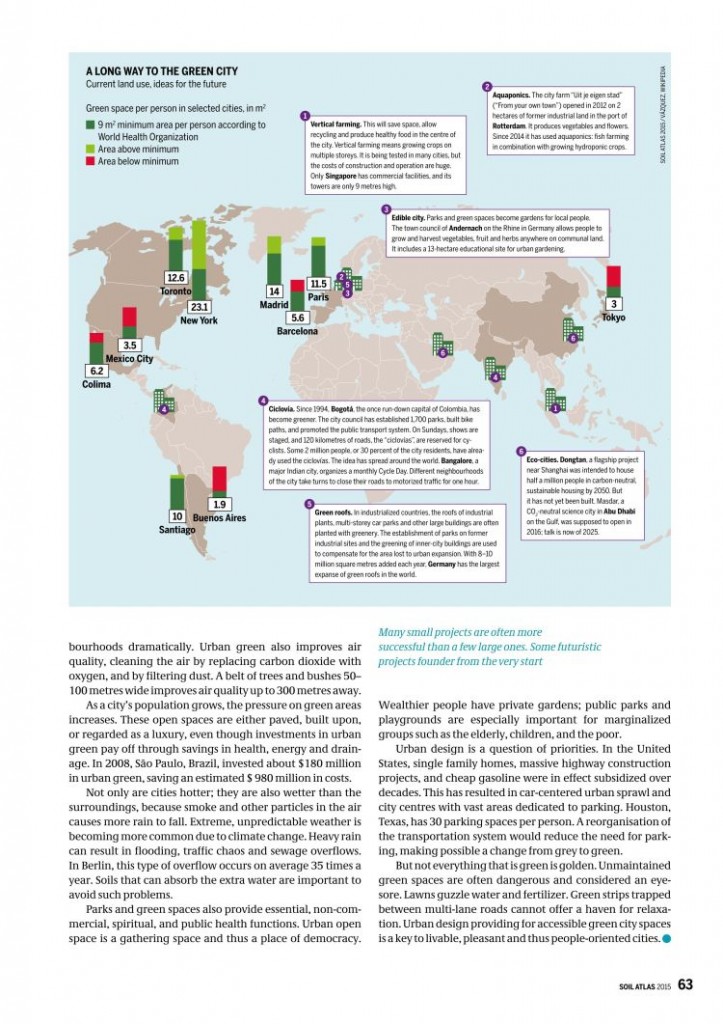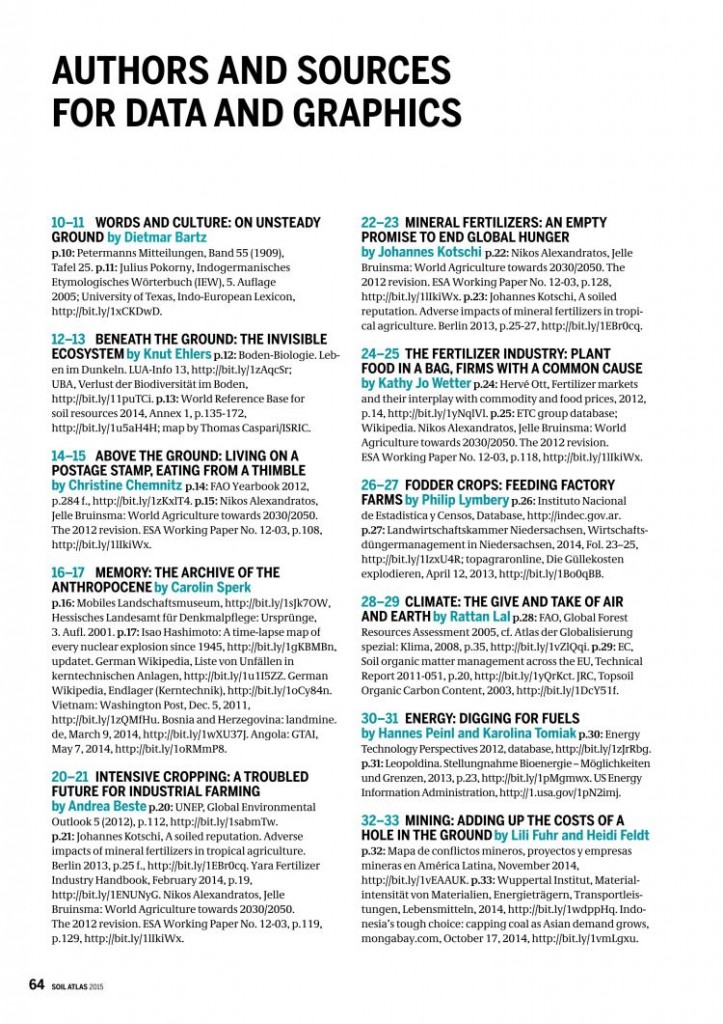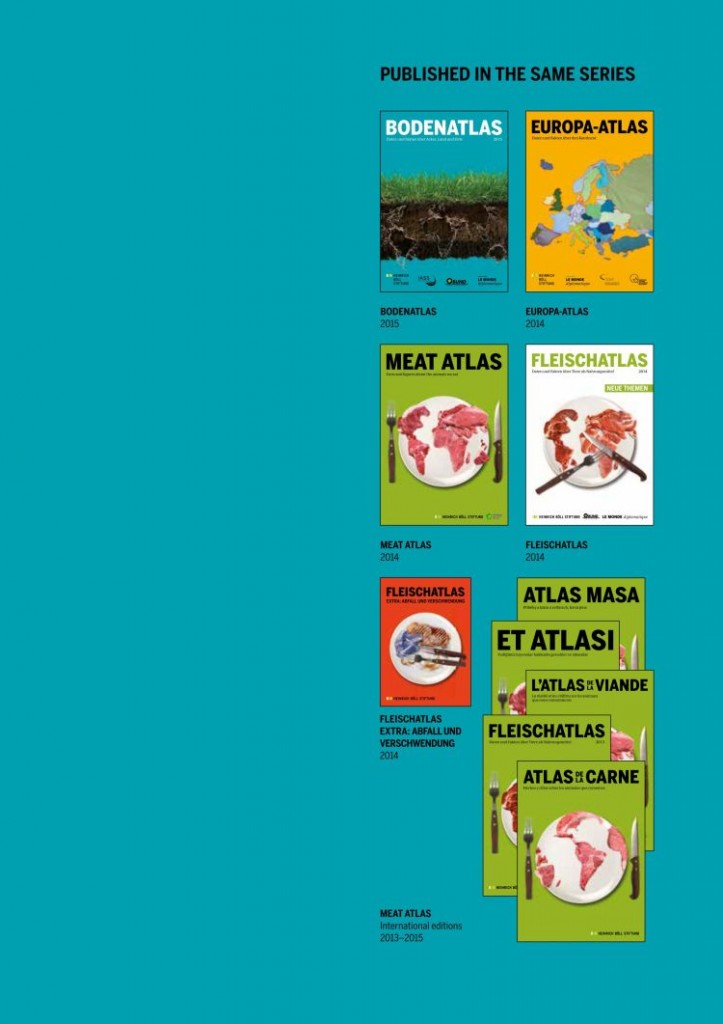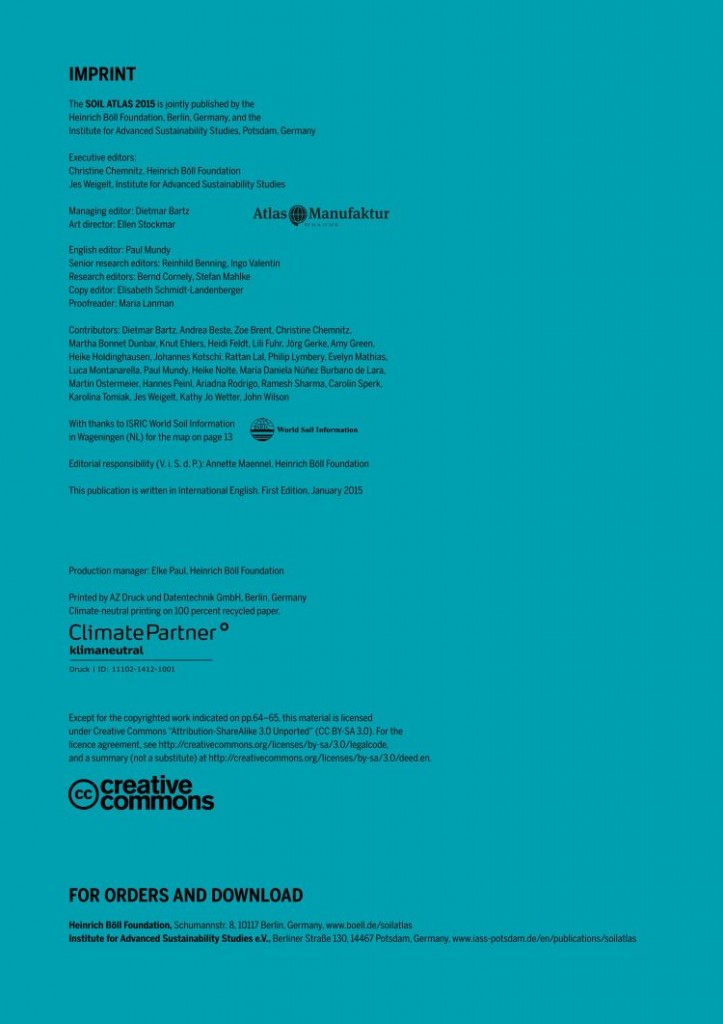The Soil Atlas 2015 presents facts and figures about earth, land and fields; its broad ranging significance and its current state in Germany, Europe and the world.
Price explosions and land speculation, increasing soil loss as a result of erosion and sealing, the effects globalized agro-industry on production and food availability across the globe, the problems associated with the virtual import of agricultural land and land distribution:
The Soil Atlas 2015 provides insights into the current state of the soils on which we depend and highlights the threats posed to them in numerous illustrations and texts.
The Soil Atlas 2015 supports citizens to make informed decisions, and sketches out pathways to a responsible agriculture and soils policy.
For a better reading experience, please open the E-Reader in full screen mode (arrow in the top right).
Please download here: ↓ English version ↓ German version ↓ French version
Download the single articles:
A
ABOVE THE GROUND
Living on a postage stamp, eating from a thimble.
The world is a big place – but we are rapidly running out of room to grow our food, and we are using it in the wrong way.
B
BENEATH THE GROUND
The invisible ecosystem
Soil fertility depends on several factors: the soil age, its parent material, its organic matter content, the climate – and people.
BIG BUSINESS
Fighting back against foreign acquisitions
Large investors are buying up land in developing countries. The locals often suffer as a result. They lose their land and access to food.
C
CLIMATE
The give and take of air and earth
Climate and soil influence each other in many ways: the climate helps form the soil, and the soil in turn affects the composition of the atmosphere – in particular the amount of carbon dioxide and other greenhouse gases.
D
DRYLANDS
Keeping livestock on the move
Until recently, drylands were thought to be fragile and unproductive, and the pastoralists who live there were criticized for harming the environment. But these views are changing.
E
ENERGY
Digging for fuels
Can alternative fuels save the planet? Some, such as tar sands, are obviously dirty. But growing biofuels takes lots of land, and they may not be as climate-neutral as once hoped.
EUROPEAN LAND IMPORTS
Consuming more than our fair share
When we consume products, we are using land – and that land may well be in another country. Our consumption patterns have big effects on the economy, society and ecology of the producing areas.
F
FODDER CROPS
Feeding factory farms
Is industrial livestock production really an efficient way to produce meat and milk? The fodder needed to feed confined animals must be imported – and the manure has to go somewhere.
G
GENDER
A piece of land to call her own
Land is important for women not just because it enables them to grow food. It is also a form of wealth, somewhere to live, a source of independence and bargaining power, and a means to obtain credit and government services.
GREEN CITIES
From urban gardening to aquaponics
By 2050, two-thirds of humanity will live in urban areas. Our quality of life depends on how liveable our cities are. Gardens have multiple functions: they produce a surprising amount of food, help prevent floods, cool the air – and are a pleasant place to relax away from the city bustle.
H
HOT SPOTS BAD STEWARDSHIP
HOT SPOTS STRUGGLE AND STRIFE
I
INTENSIVE CROPPING
A troubled future for industrial farming
Less humus means lower fertility – something that no amount of fertilizer can solve. And new cultivation methods bring new problems.
L
LAND INVESTMENTS
A new type of territorial expansion
As foreigners snap up farmland around the world, it is hard to know who is investing in what, and what the effects on local people might be. An international database is throwing light on the murk.
LAND POLICY
Acceleration off a cliff
Soils are scarcely mentioned in international agreements. The neglect has not been benign.
LAND REFORM
The power of property: A privilege for a few
The feudal lord, the local squire, the village chief, the hacienda owner, the rancher and the plantation baron. They owned, or own, expansive acres, and they pull the strings of power.
LANDOWNING
Buy an estate and harvest the subsidies
Europe’s small-scale family farmers are subject to many of the same pressures as those in the rest of the world. In addition, the cards are stacked against them by government policies.
M
MEMORY
The archive of the Anthropocene
Soils preserve the history of the landscape and the people who live there. They will reveal to future generations how good our current stewardship of the planet has been.
MINERAL FERTILIZERS
An empty promise to end global hunger
Fertilizers are often seen as a vital means to increasing food production and crop yields worldwide. But the long-term damage they cause to the soil is often forgotten.
MINING
Adding up the costs of a hole in the ground
Less than one percent of the world’s land is used for mineral extraction – a tiny amount compared to agriculture. But mining has a disproportionate effect on the environment.
O
ORGANIC FARMING
Feeding crops by feeding the soil
Conventional farming relies on fertilizer to feed the crops, but in doing so it wrecks the soil. Organic farming sees the soil as the basis of sustainable production.
T
THE COMMONS
This is our land
Who controls the land: private individuals, the government, or the community? Without private ownership, people have little incentive to invest. But community-managed commons are vital for billions of people.
THE FERTILIZER INDUSTRY
Plant food in a bag, firms with a common cause
Producing and marketing nitrogen, phosphorus and potassium take a lot of investment, so the industry is dominated by big business.
TRADITIONAL SYSTEMS
Rehabilitating the soil: What farmers can do
Years of overuse have left soils compacted, eroded and depleted of nutrients. What can small-scale farmers do to restore the soil?
U
URBANIZATION
Flocking together: Living in a crowd
Humans are a gregarious species. As more and more of us move into cities, we are paving over big chunks of the planet.
W
WORDS AND CULTURE
On unsteady ground
A look at history reveals deep-rooted changes in our views about the earth beneath our feet – and helps us understand who we are.
The Soil Atlas 2015 is jointly published by the Heinrich Böll Foundation, Berlin, Germany, and the Institute for Advanced Sustainability Studies, Potsdam, Germany.
Published: January 2015 (First Edition) • Pages: 68 • Licence: CC BY-SA 3.0
